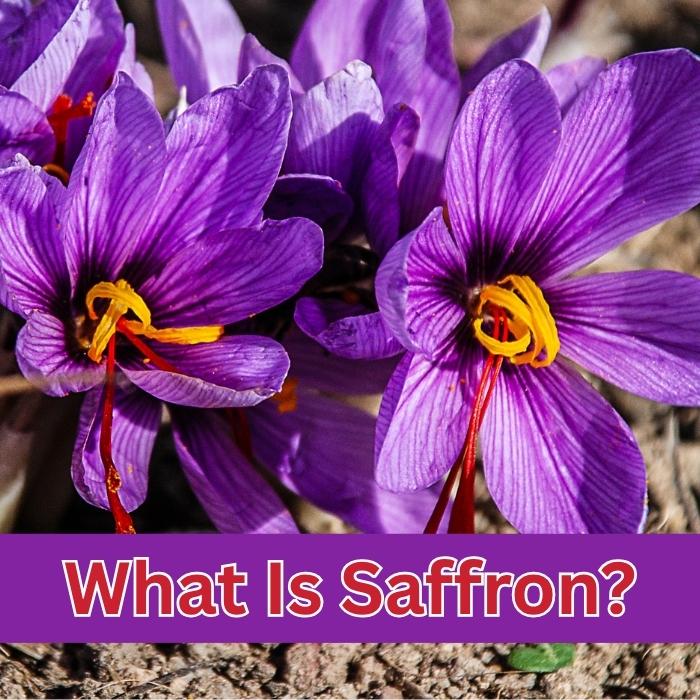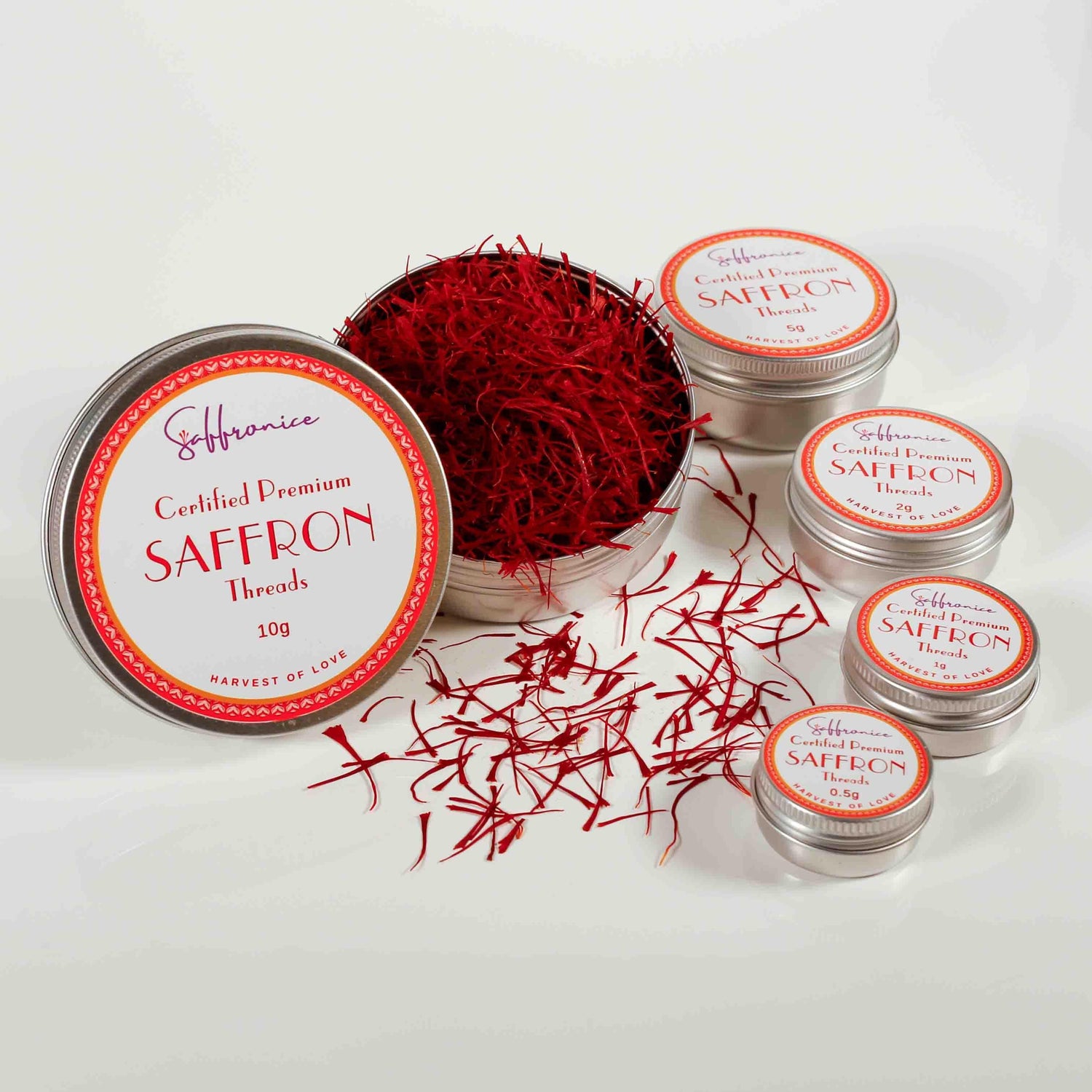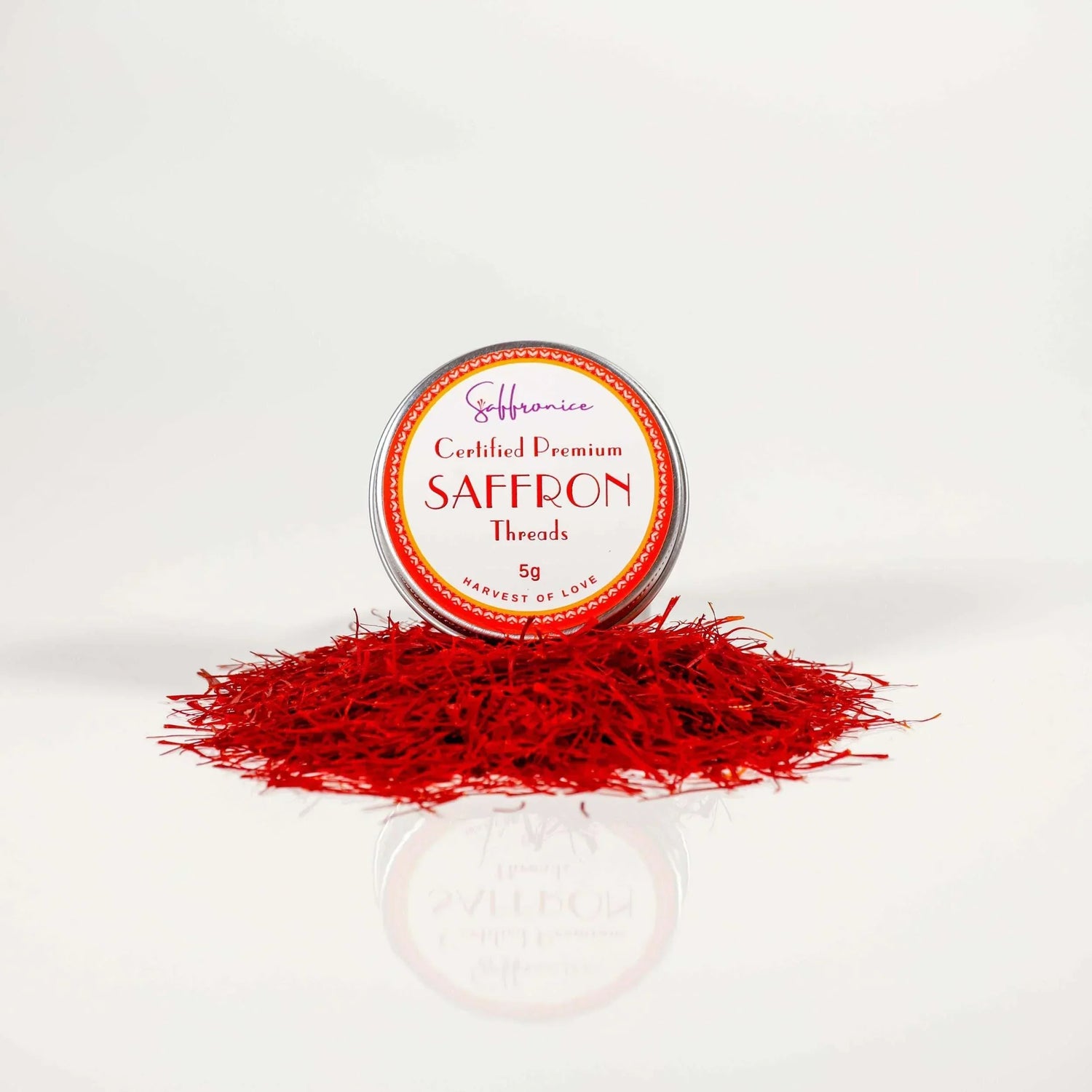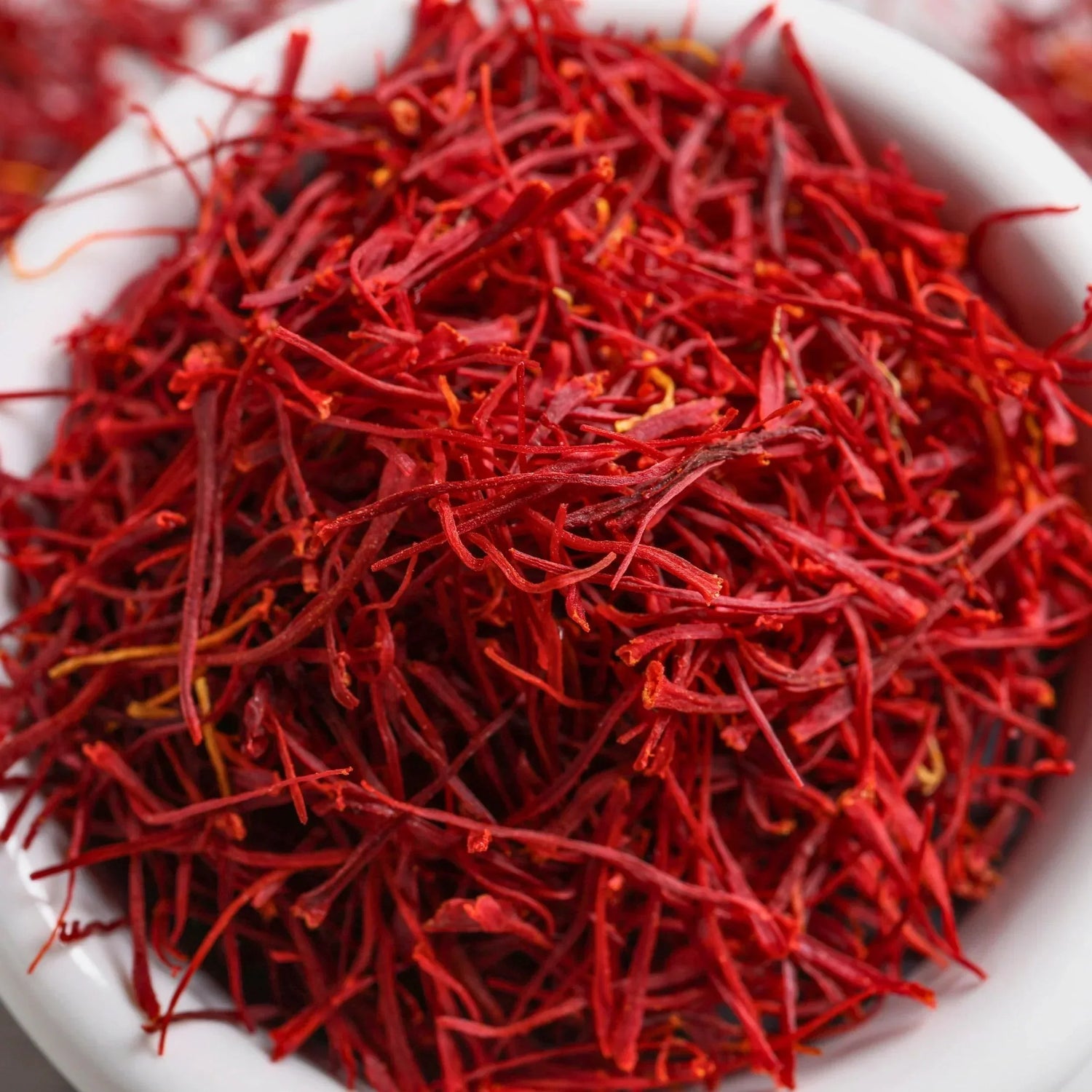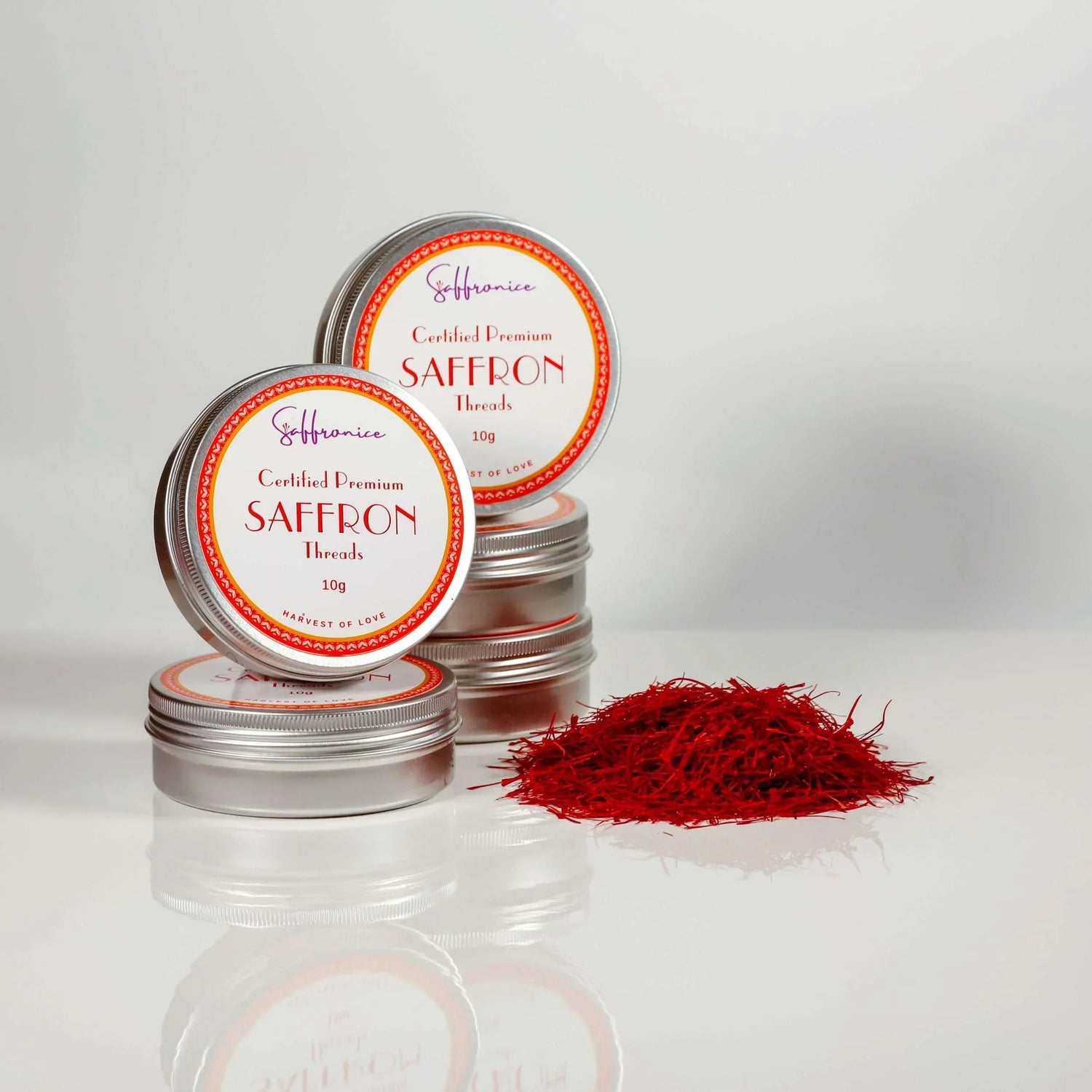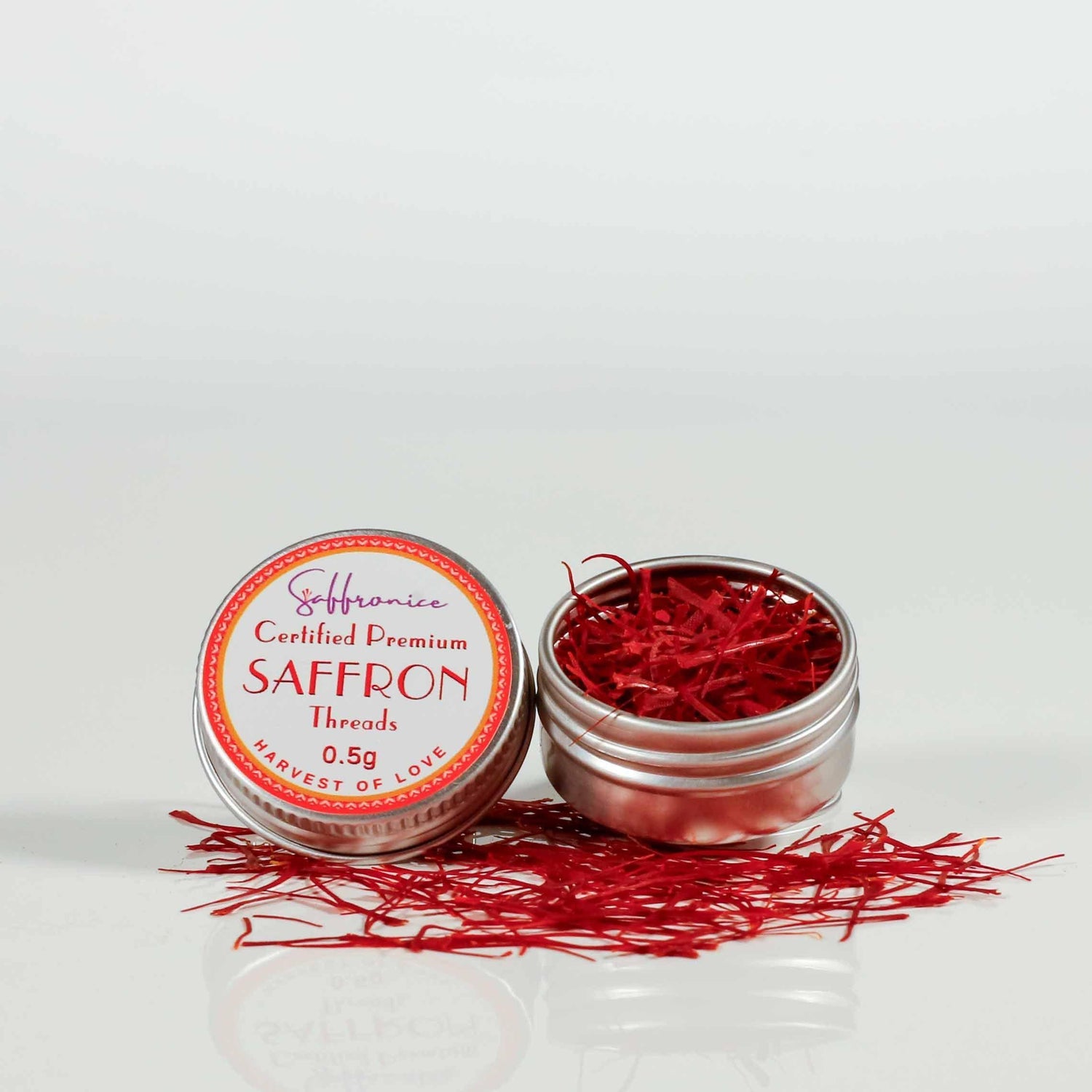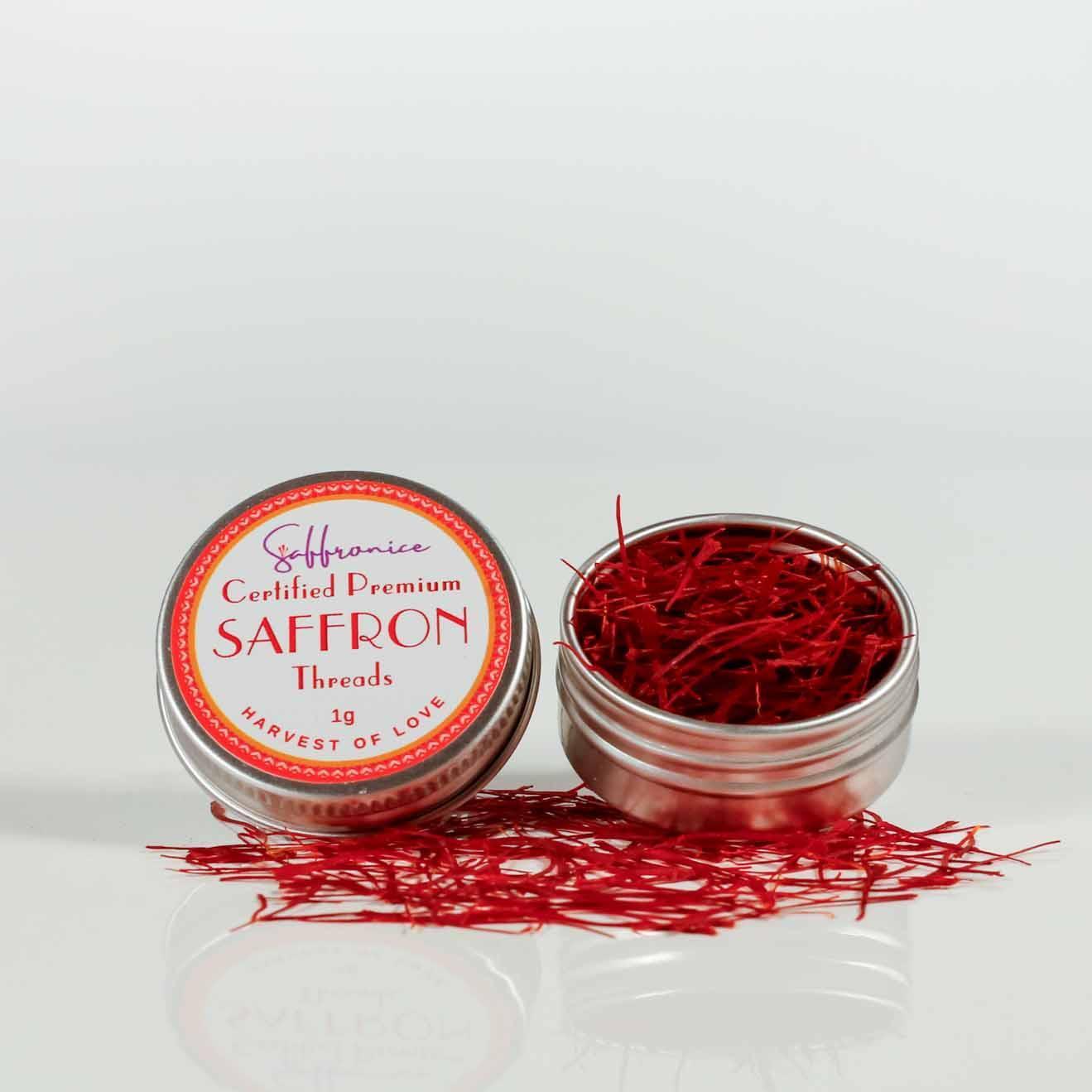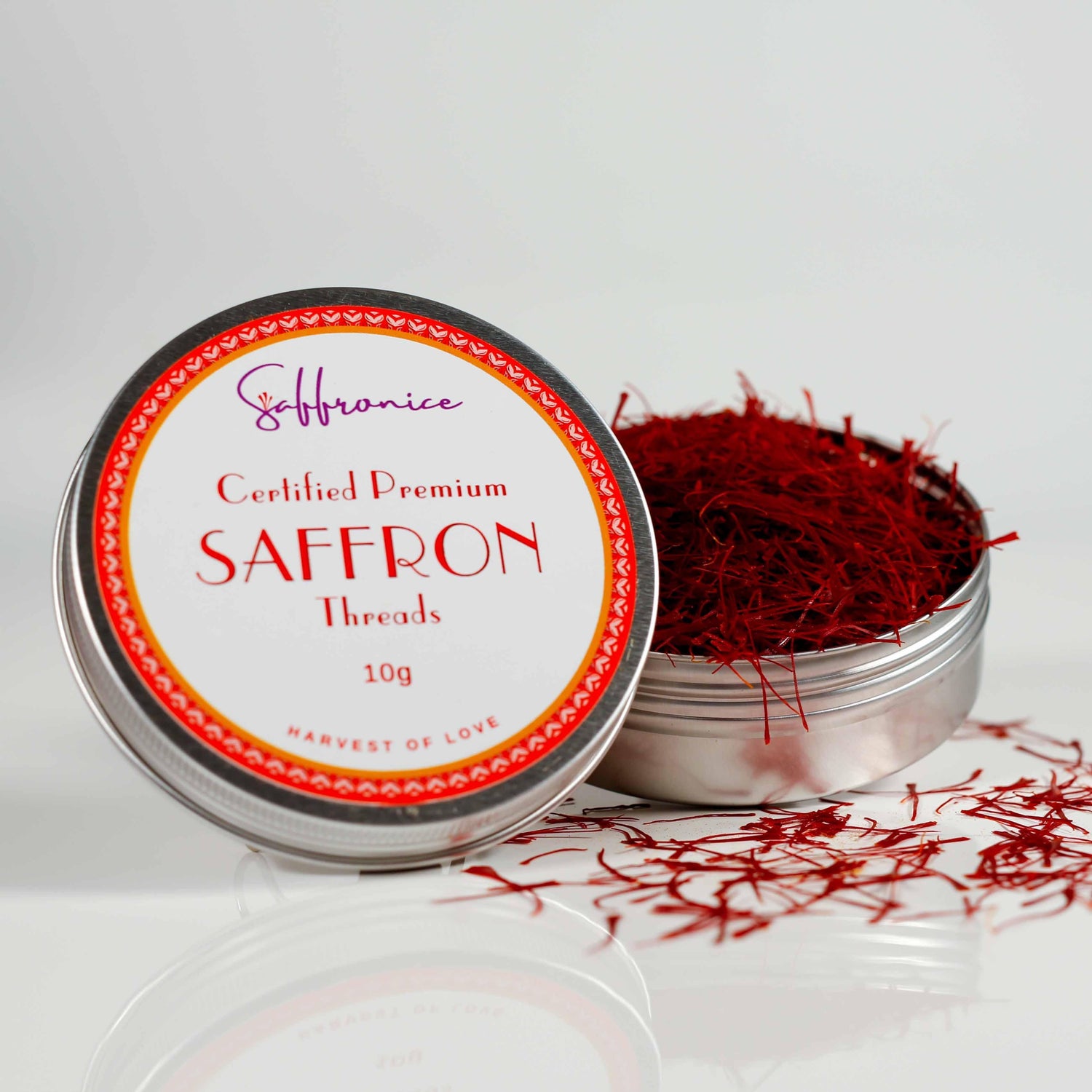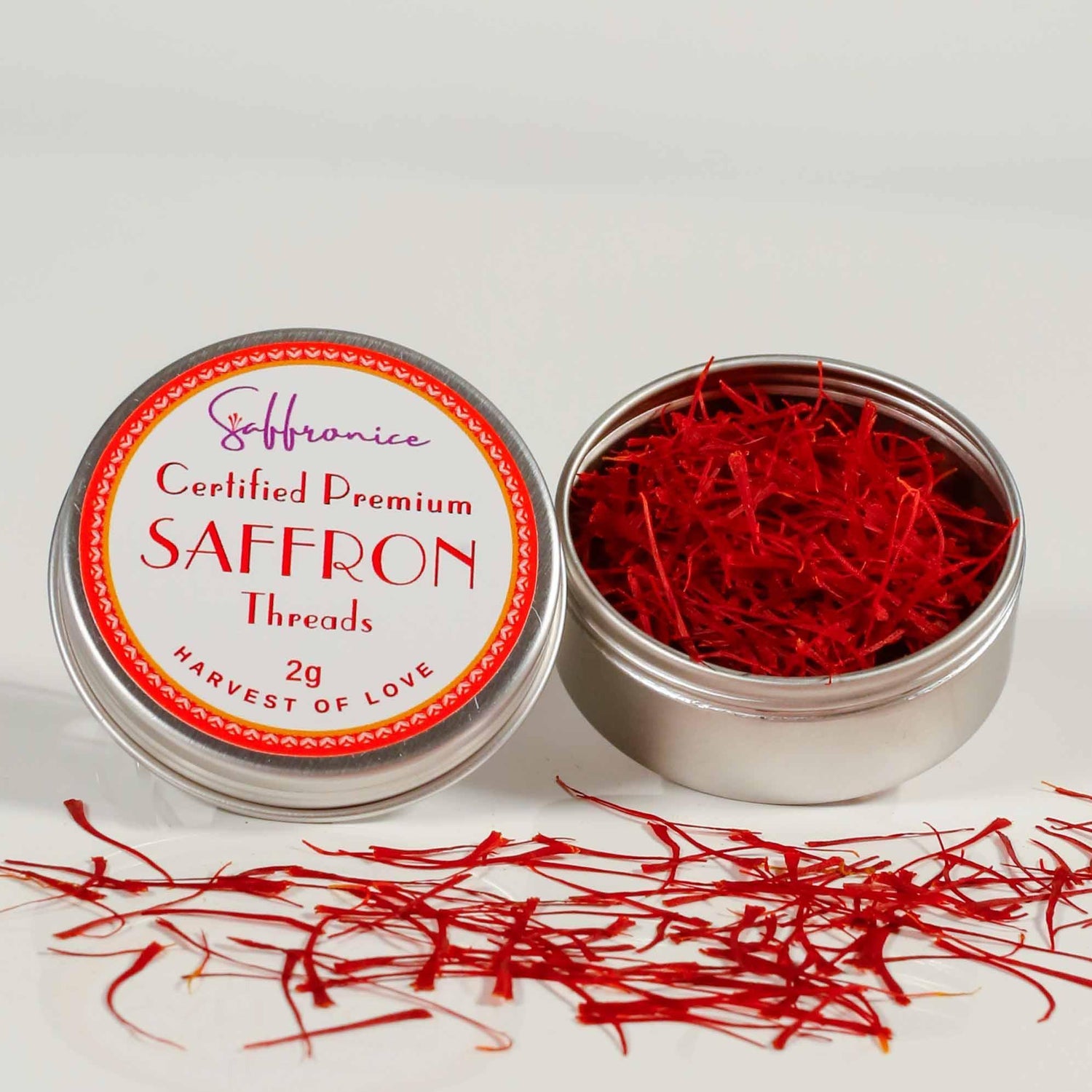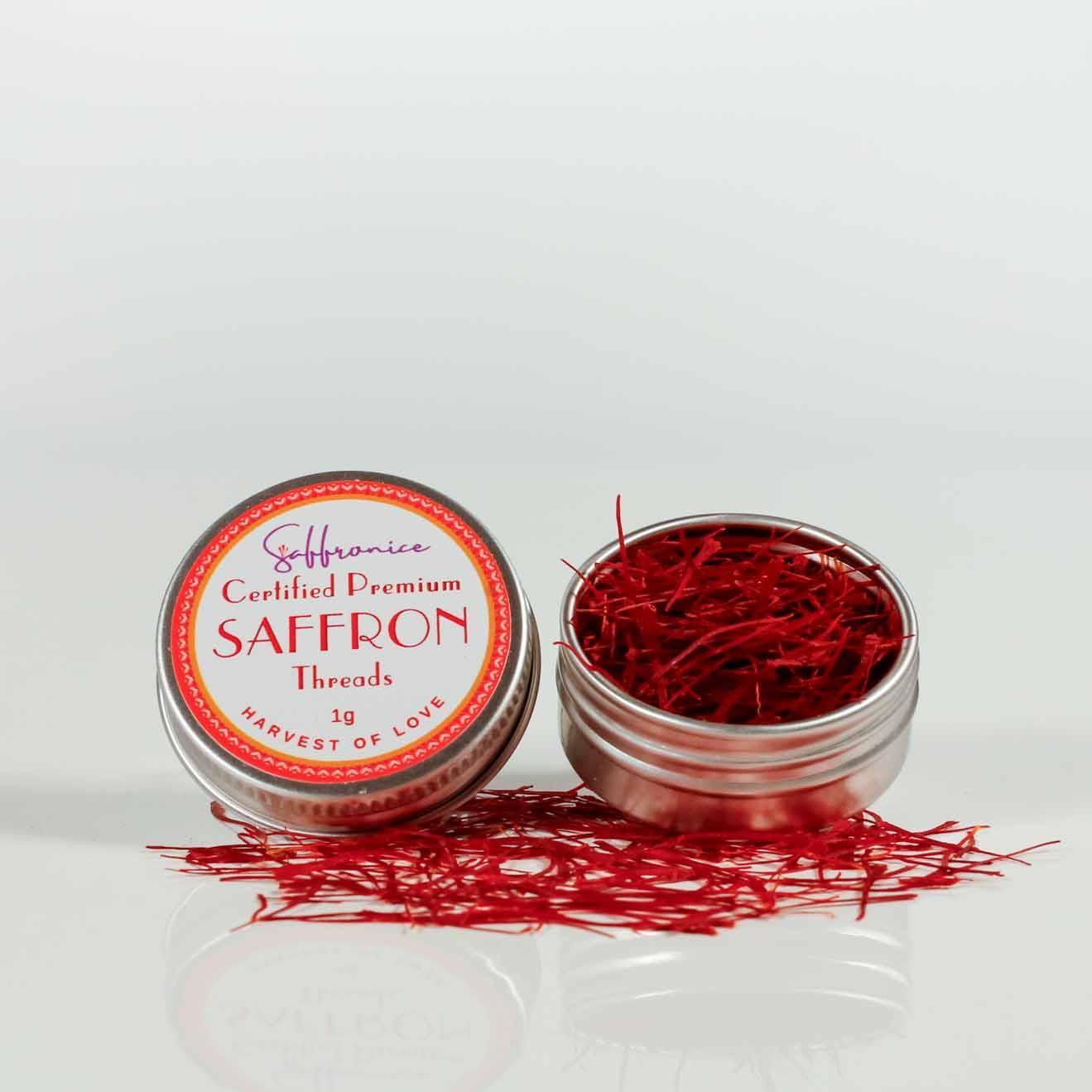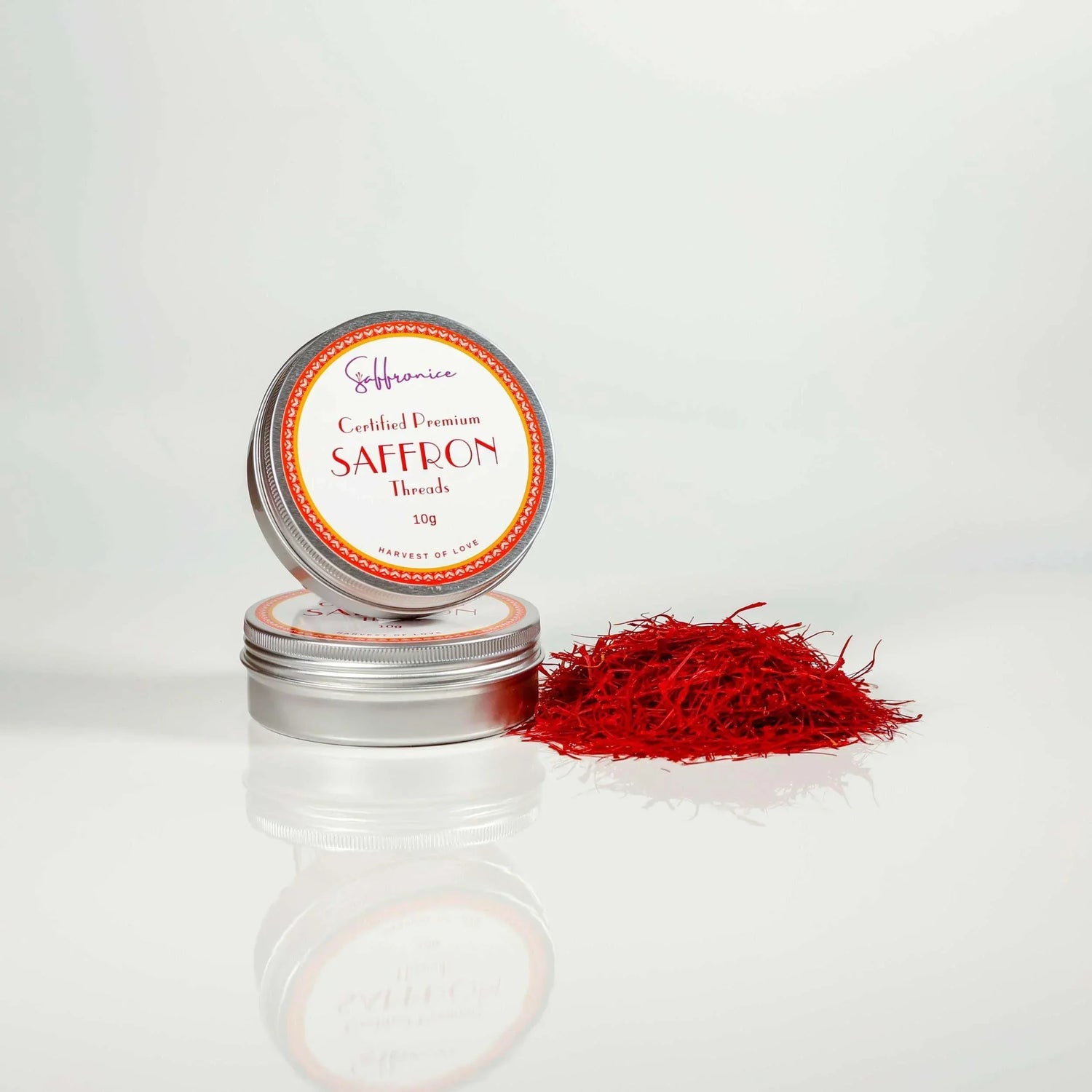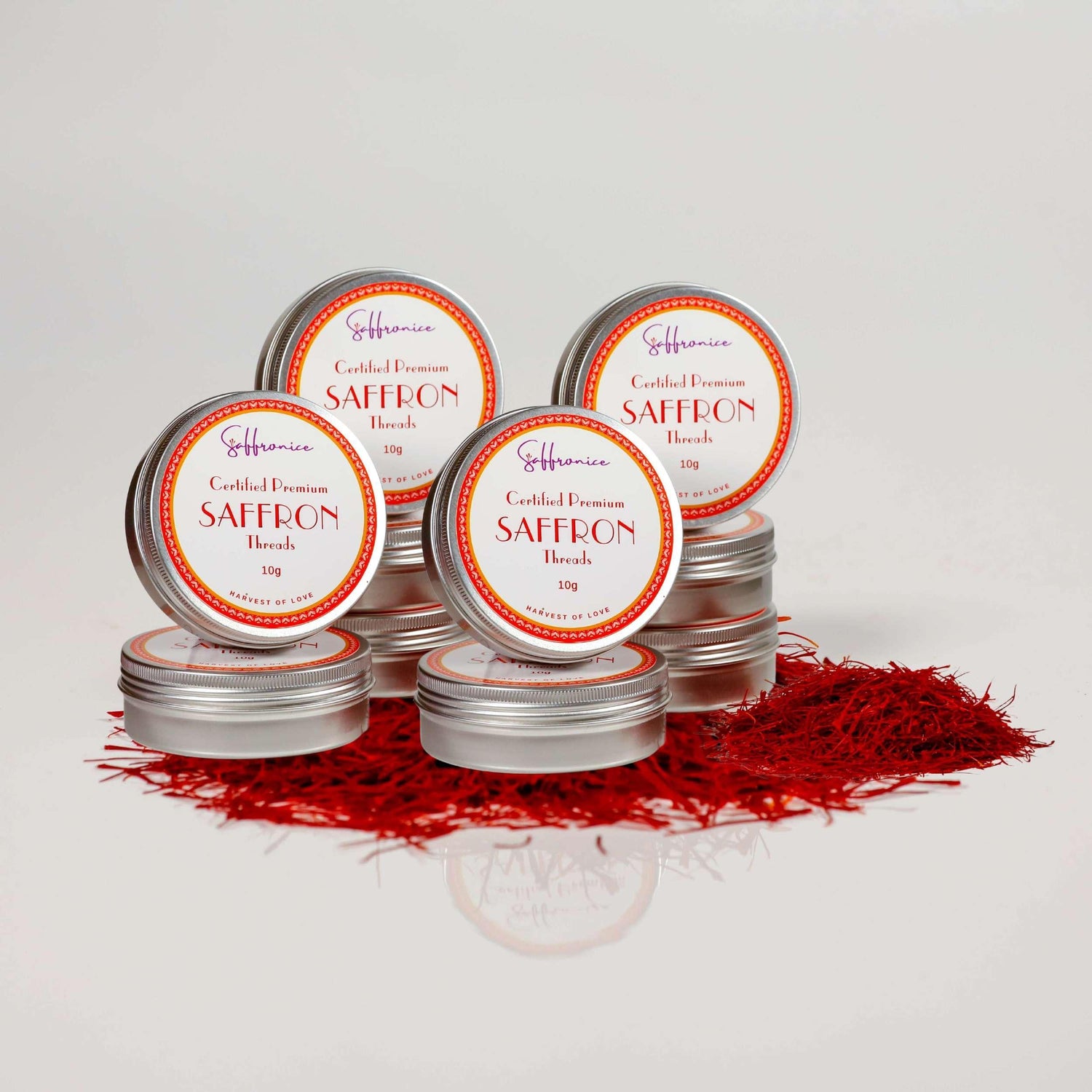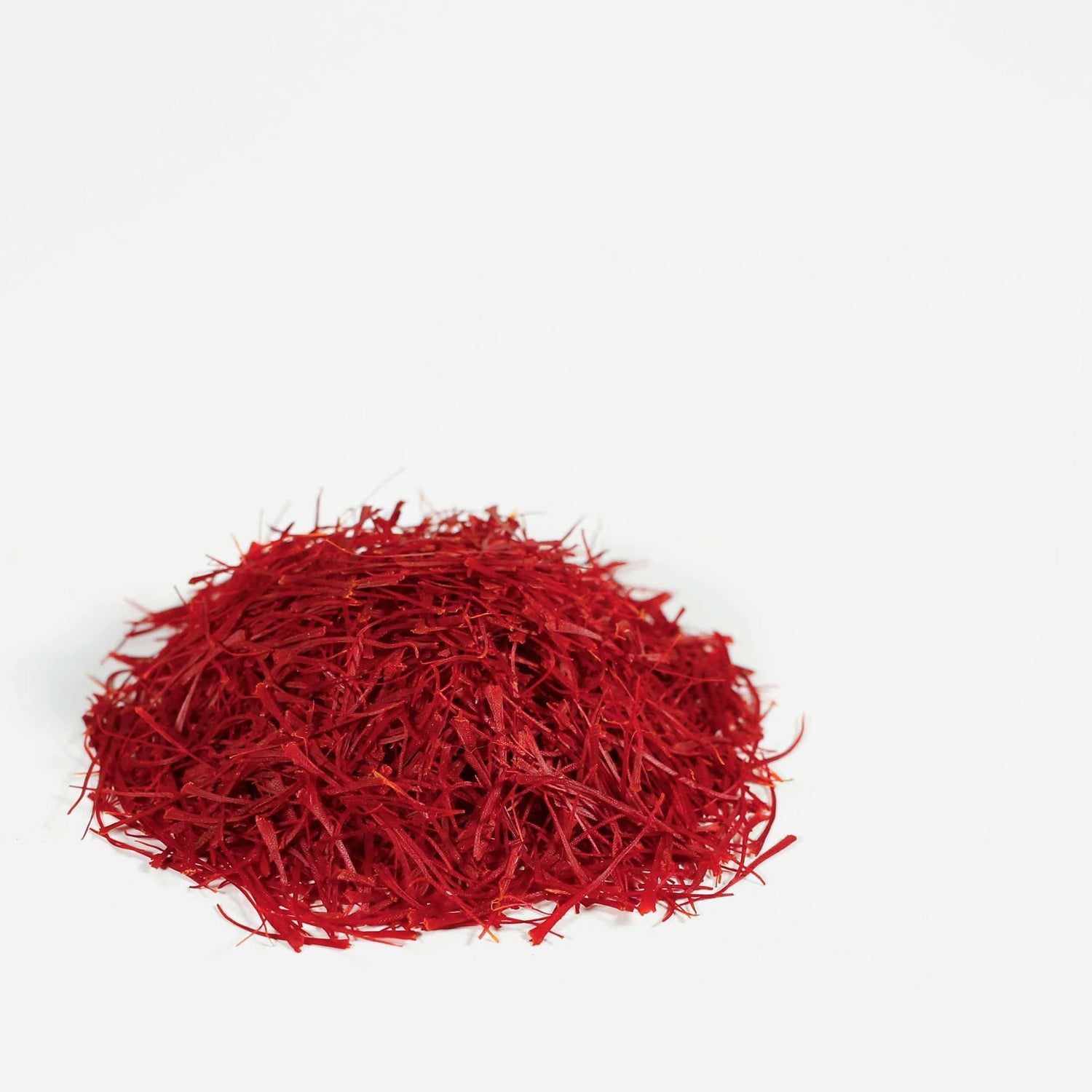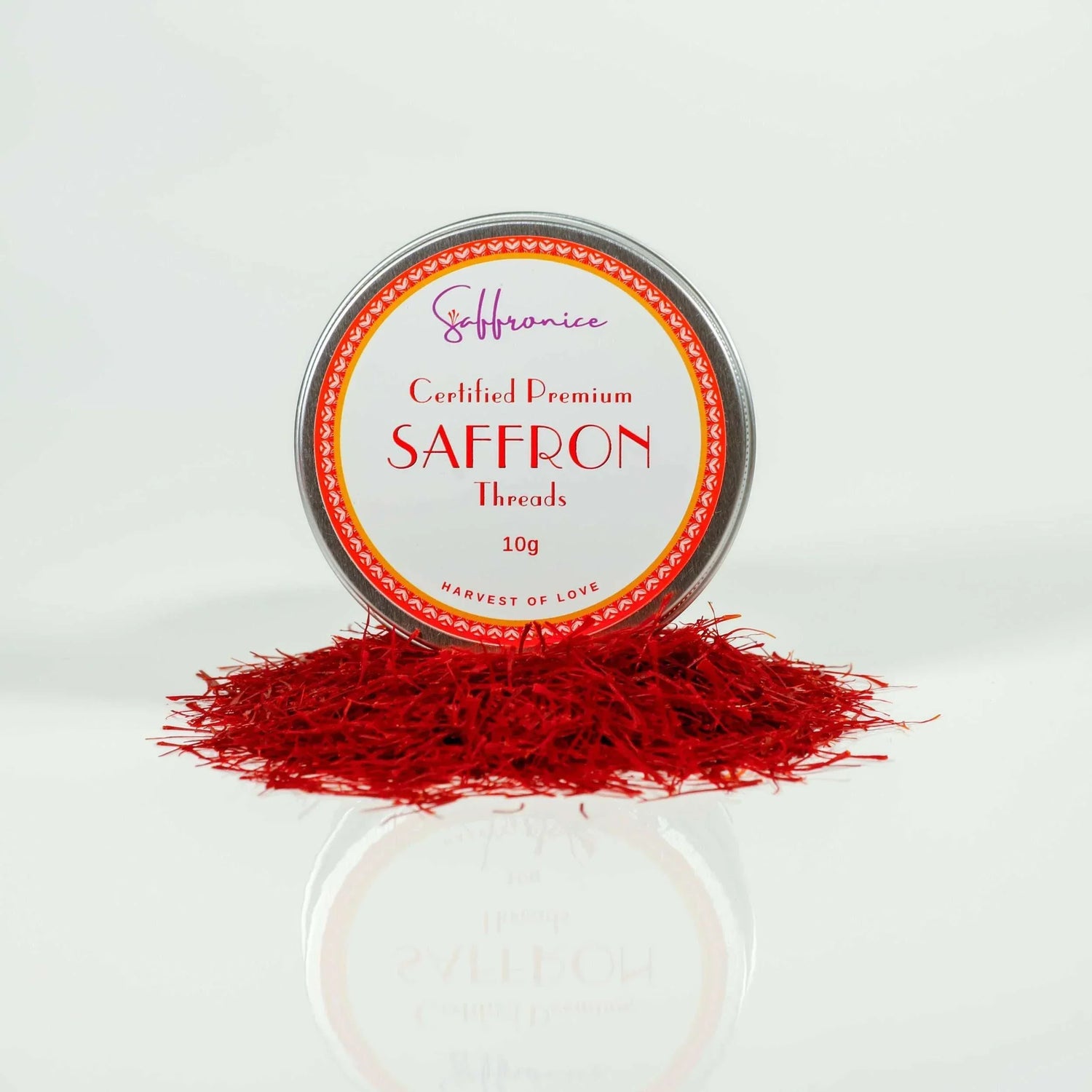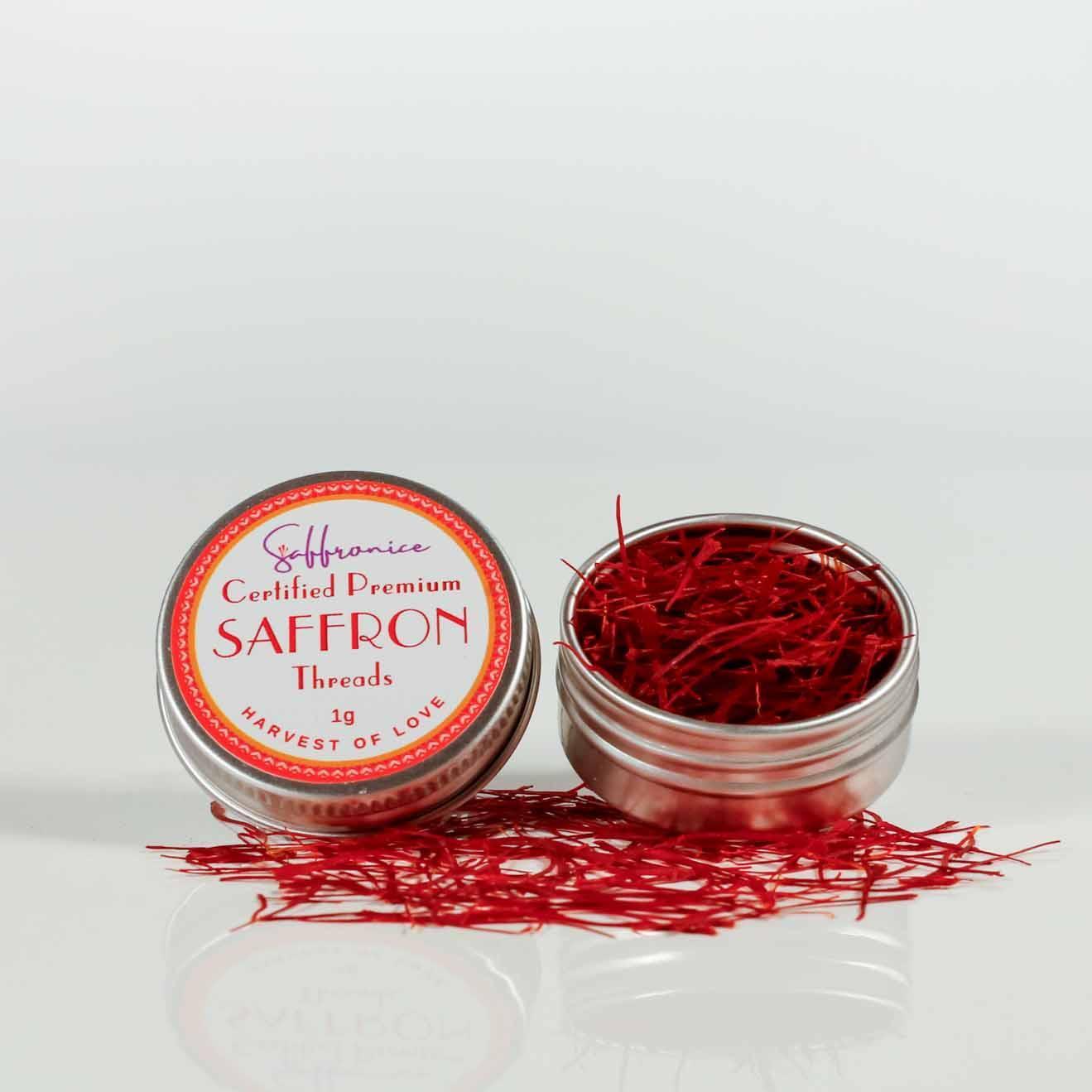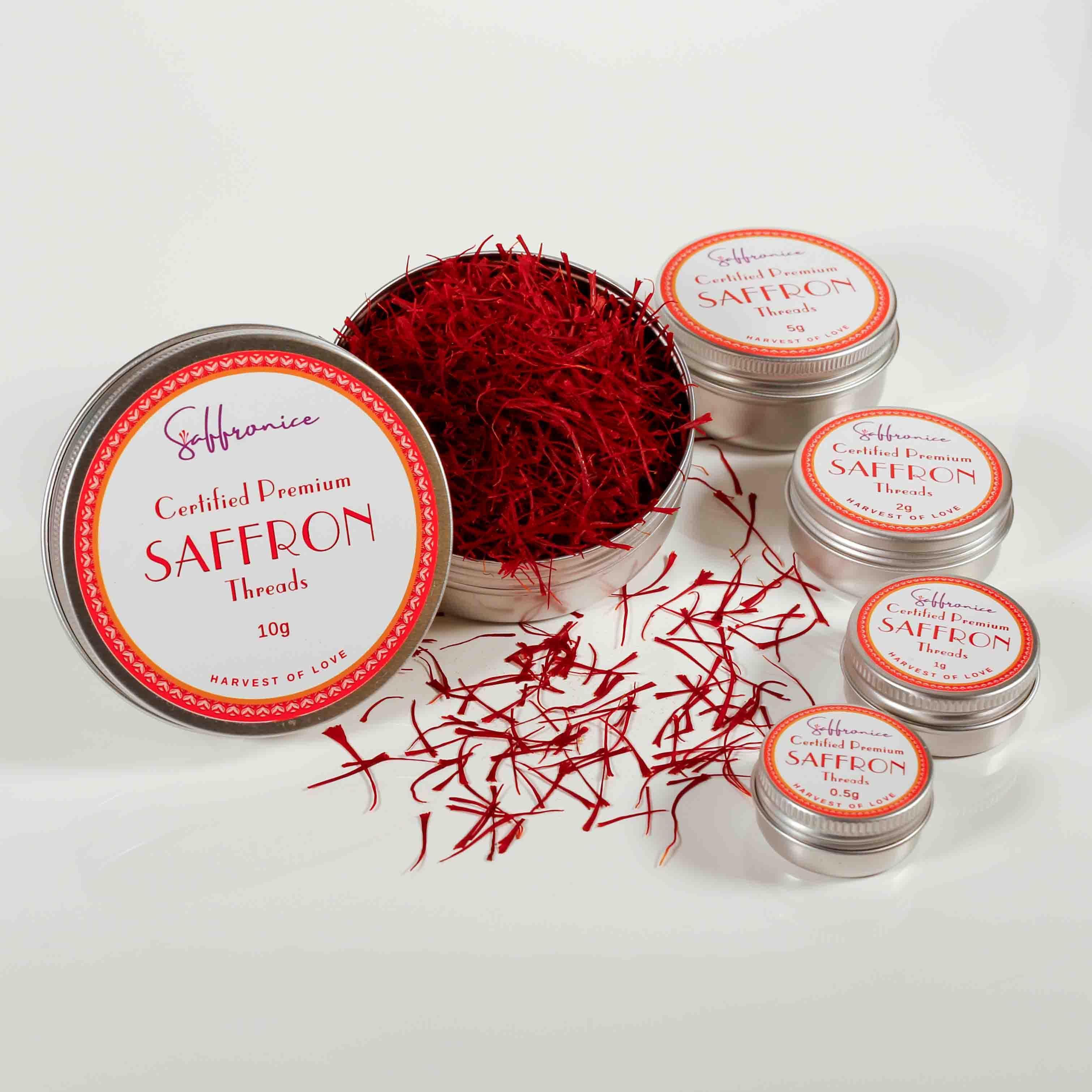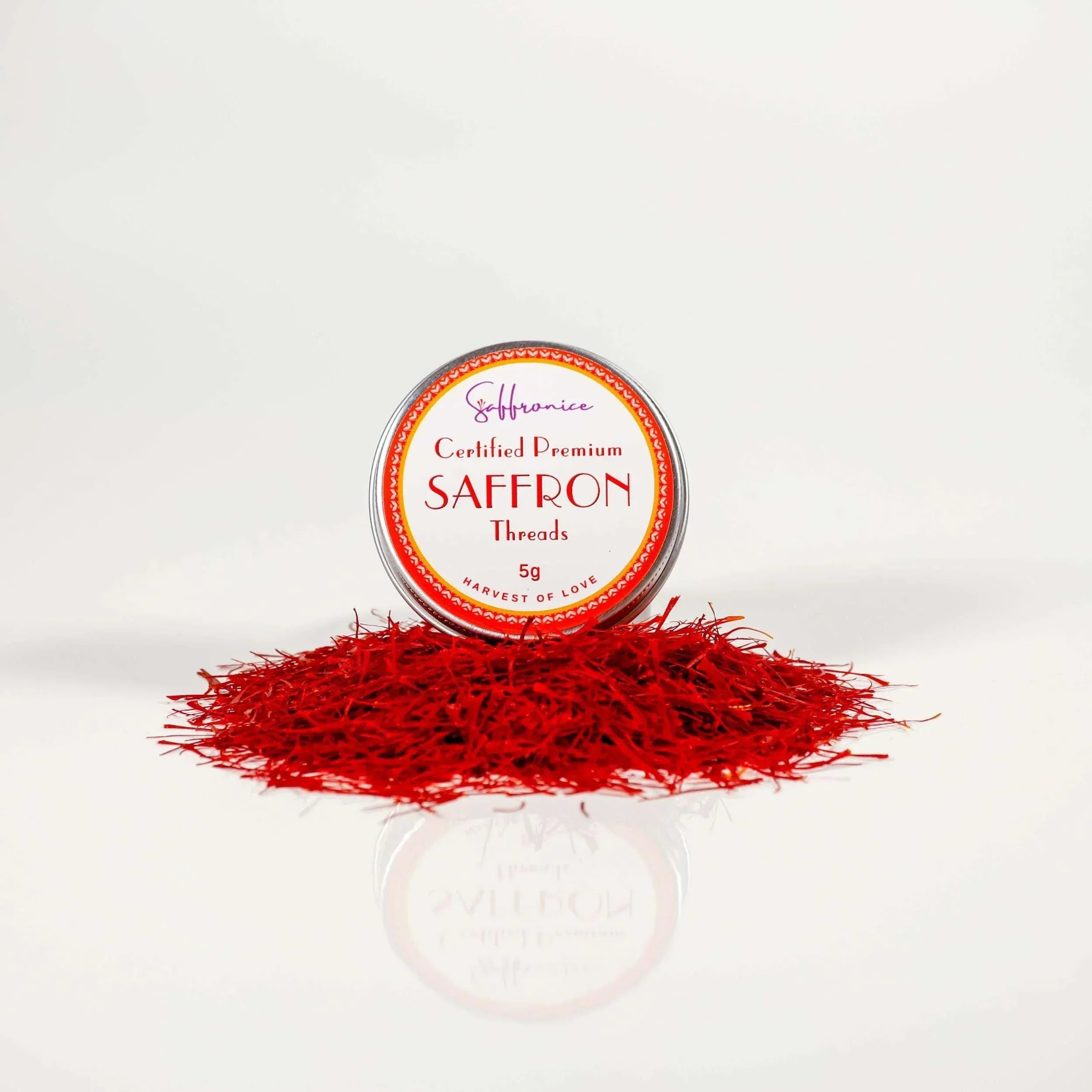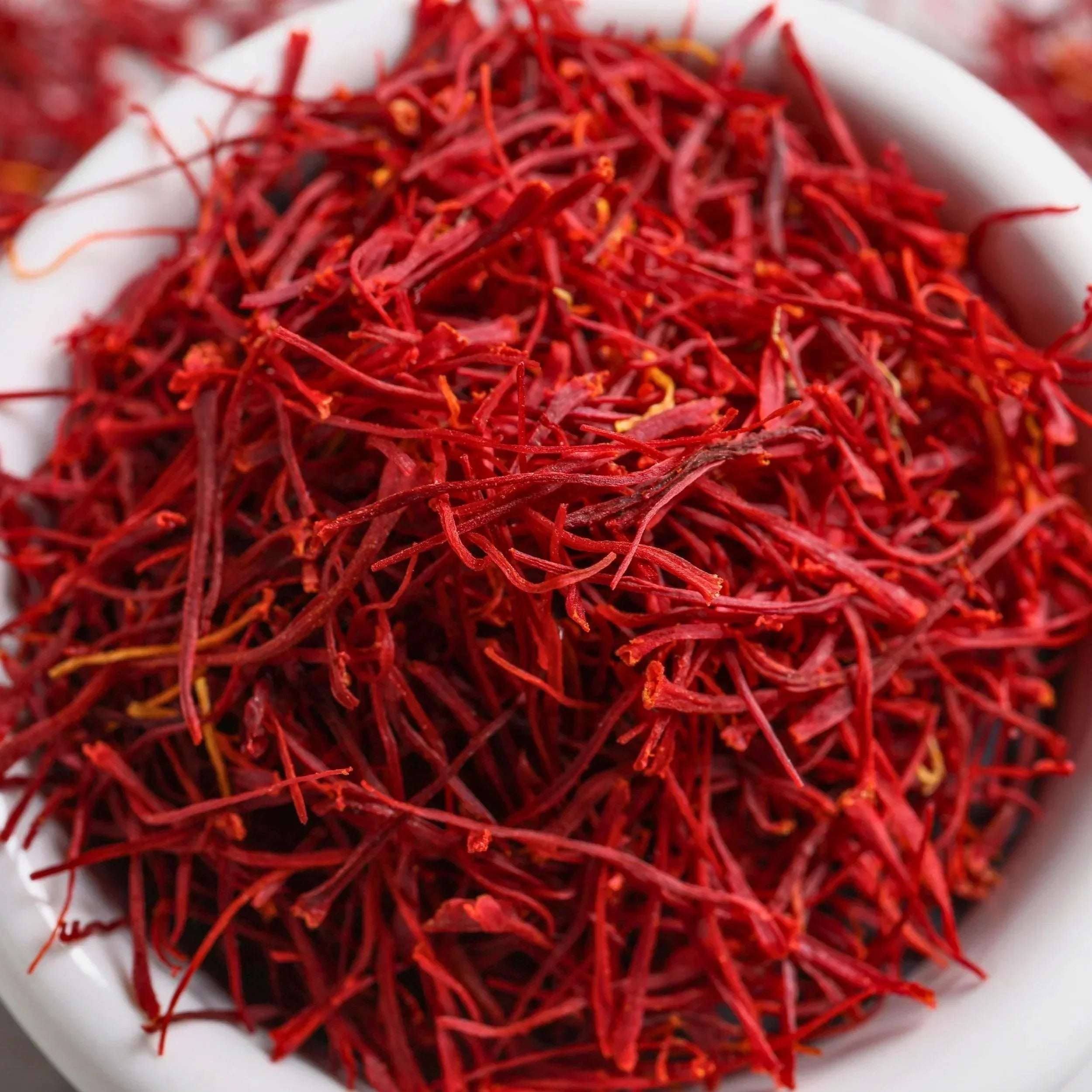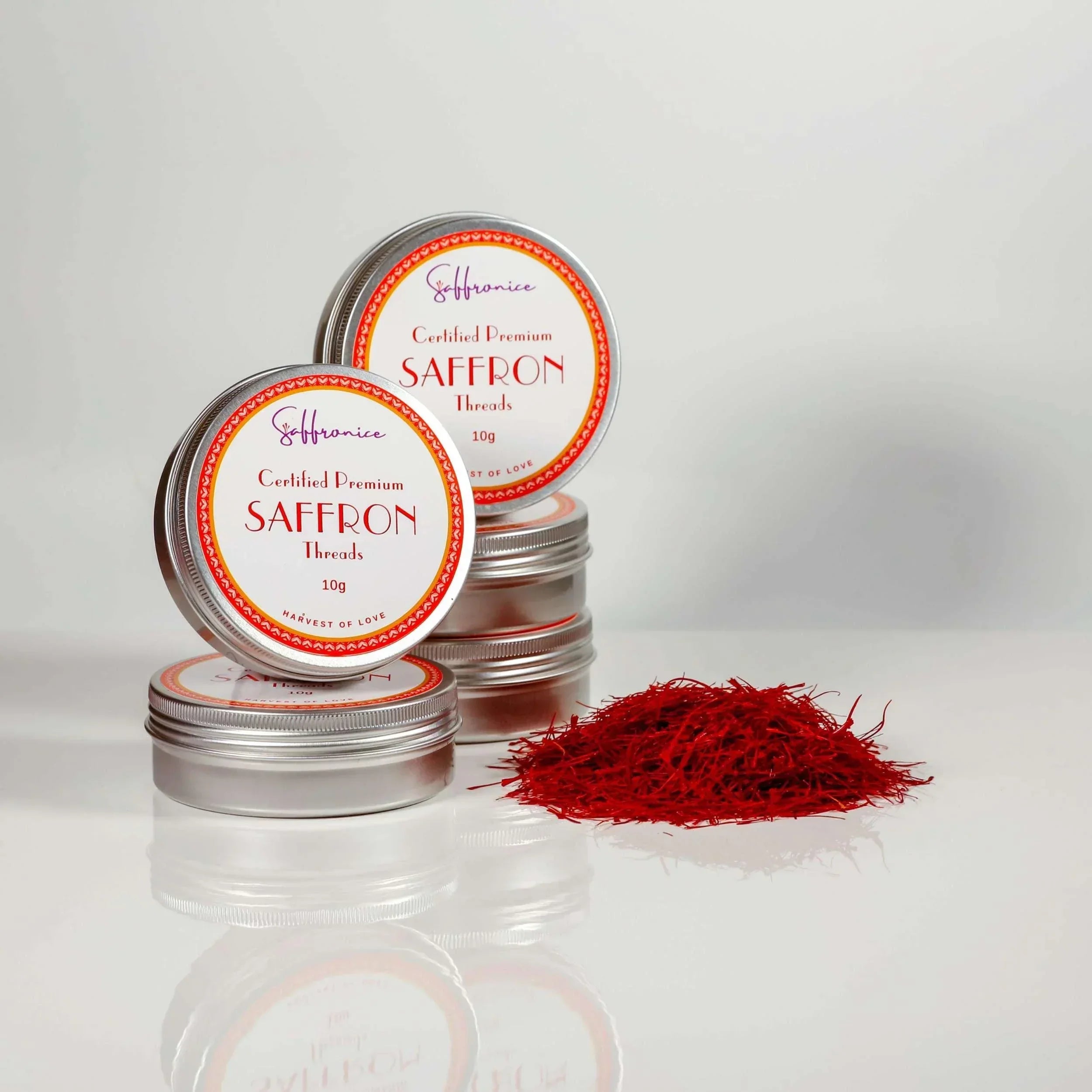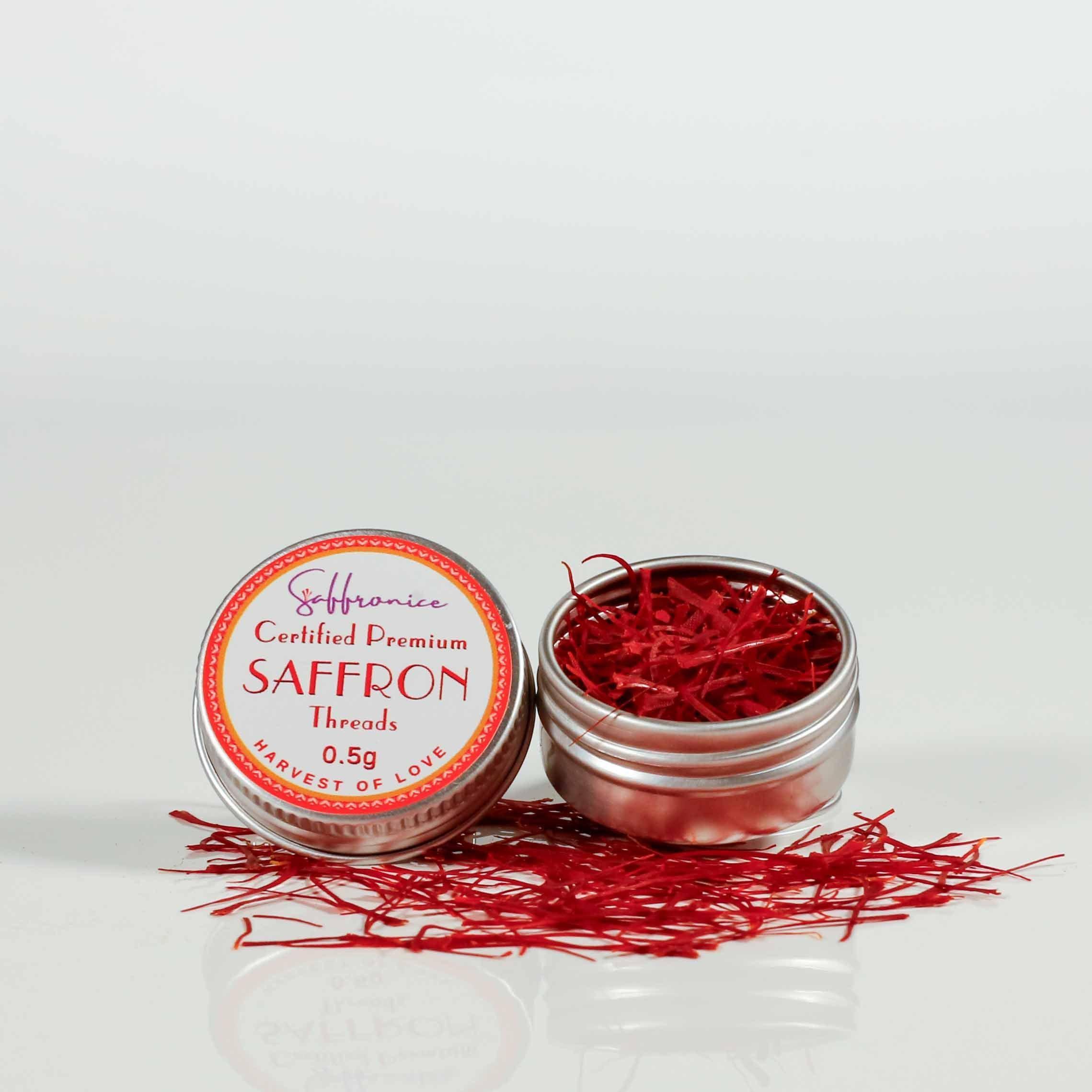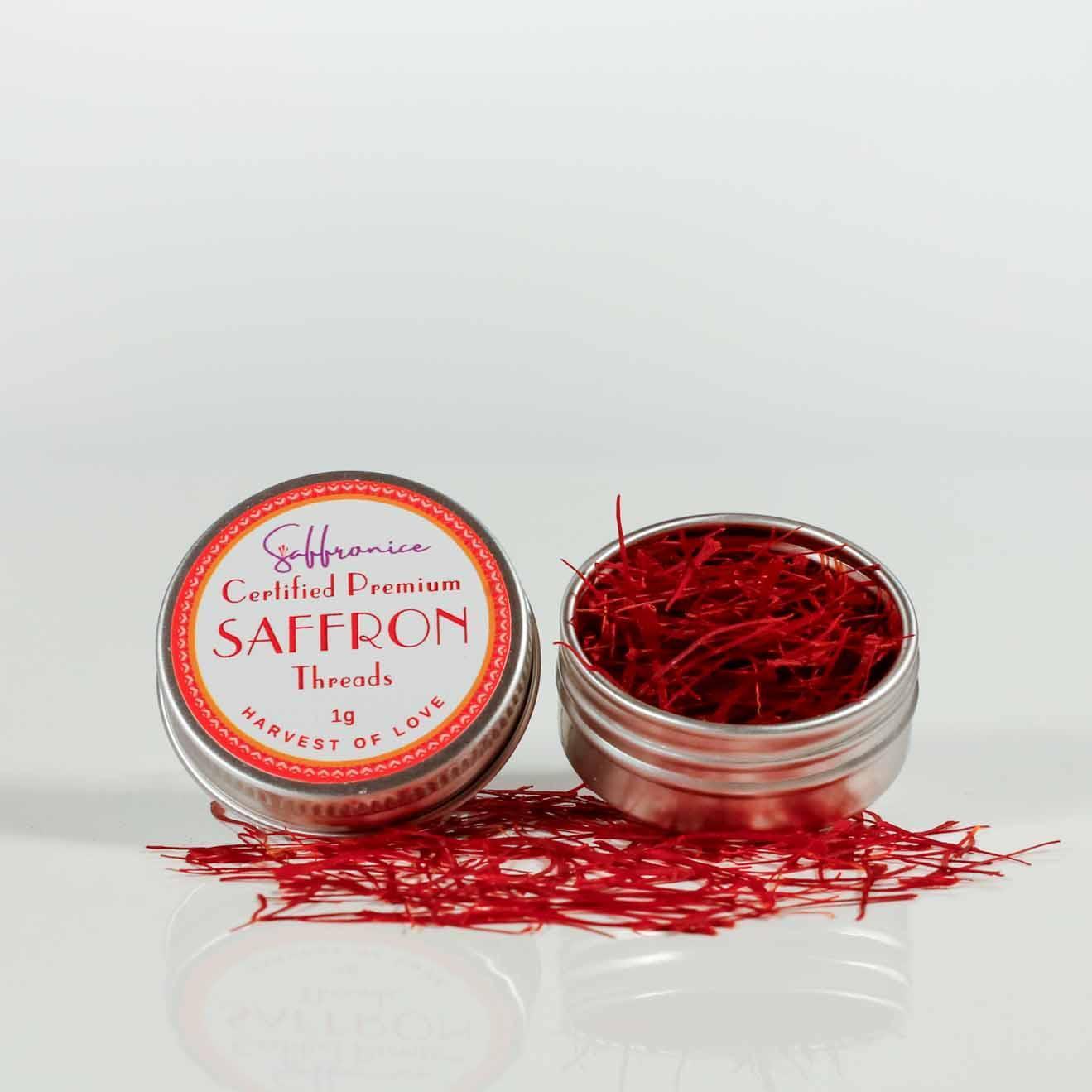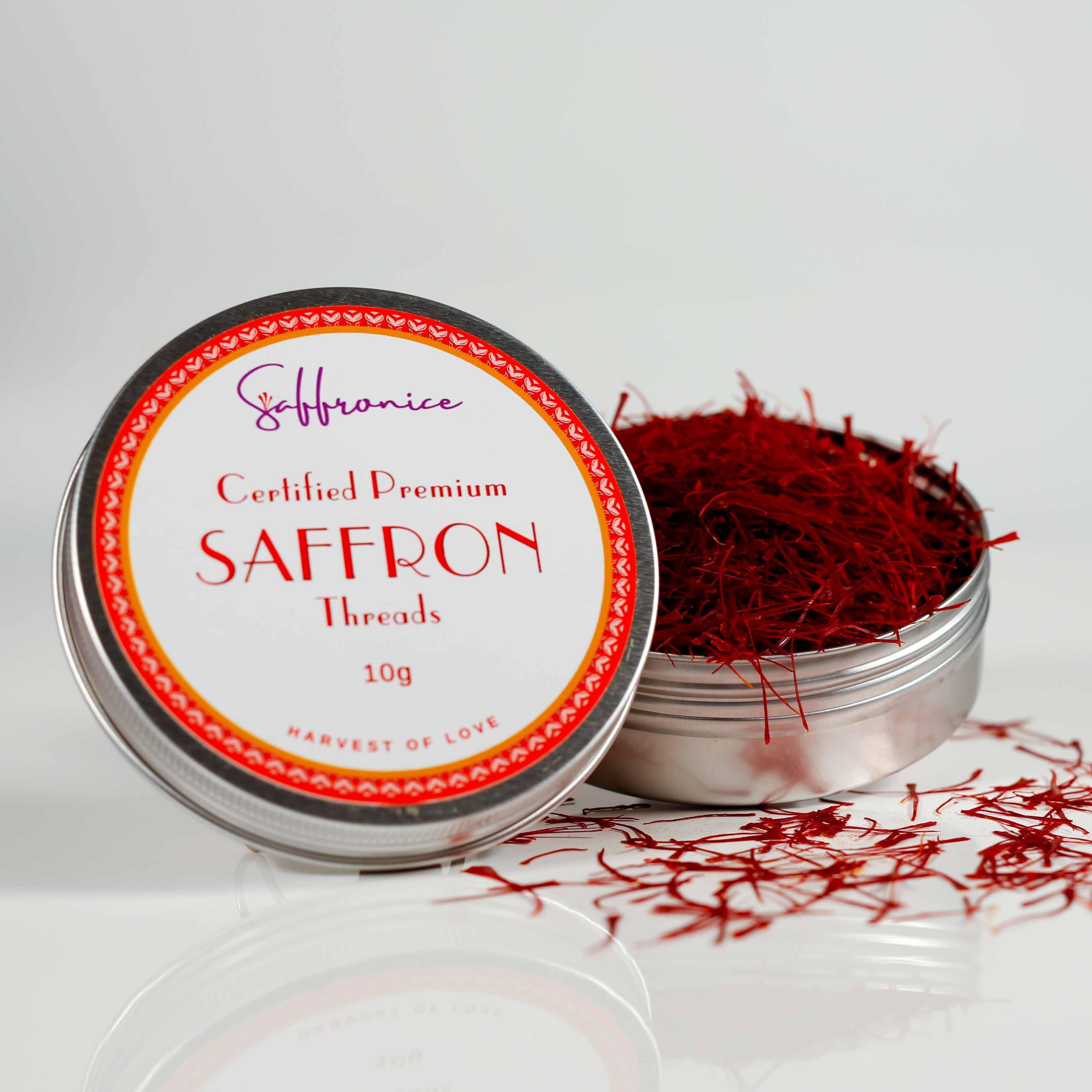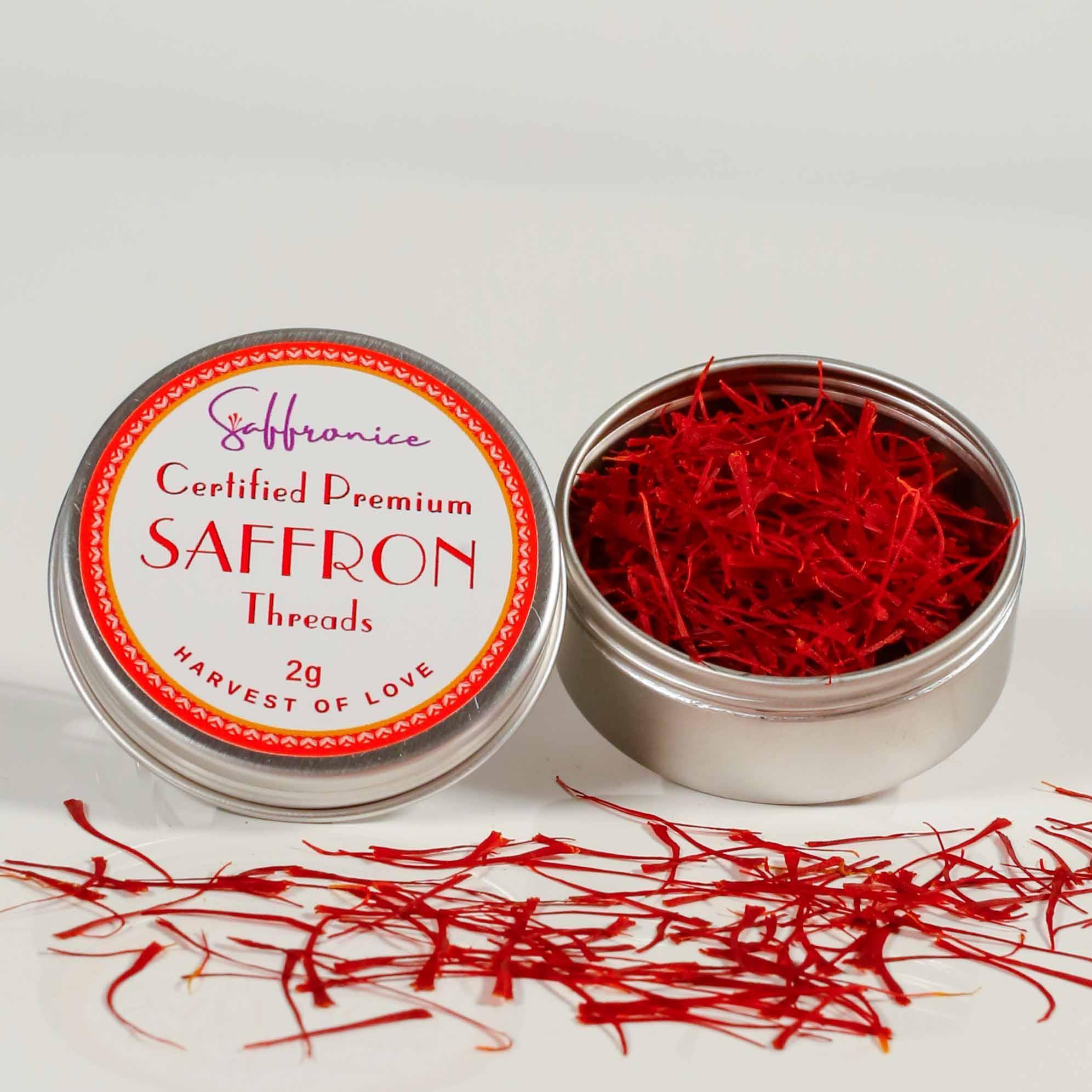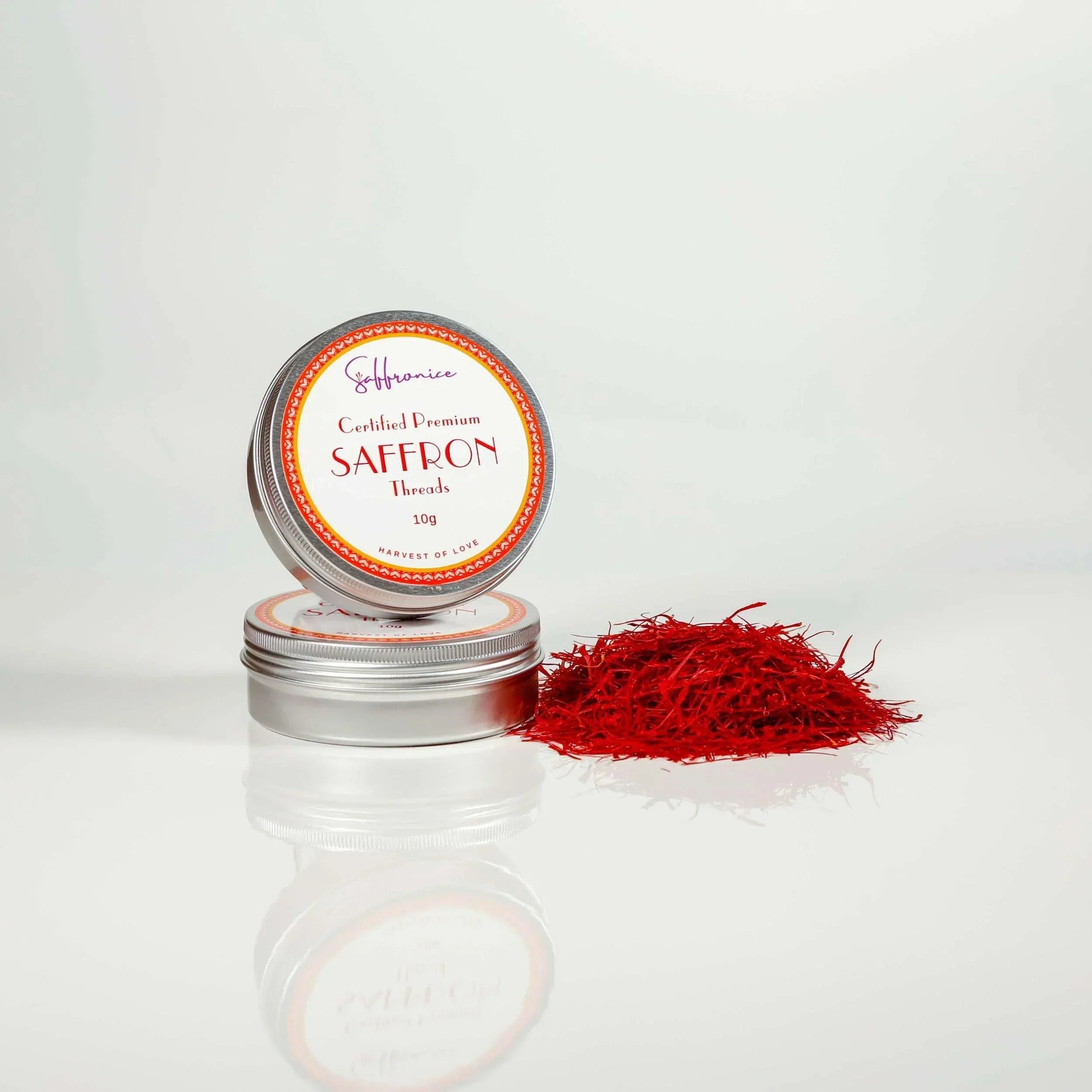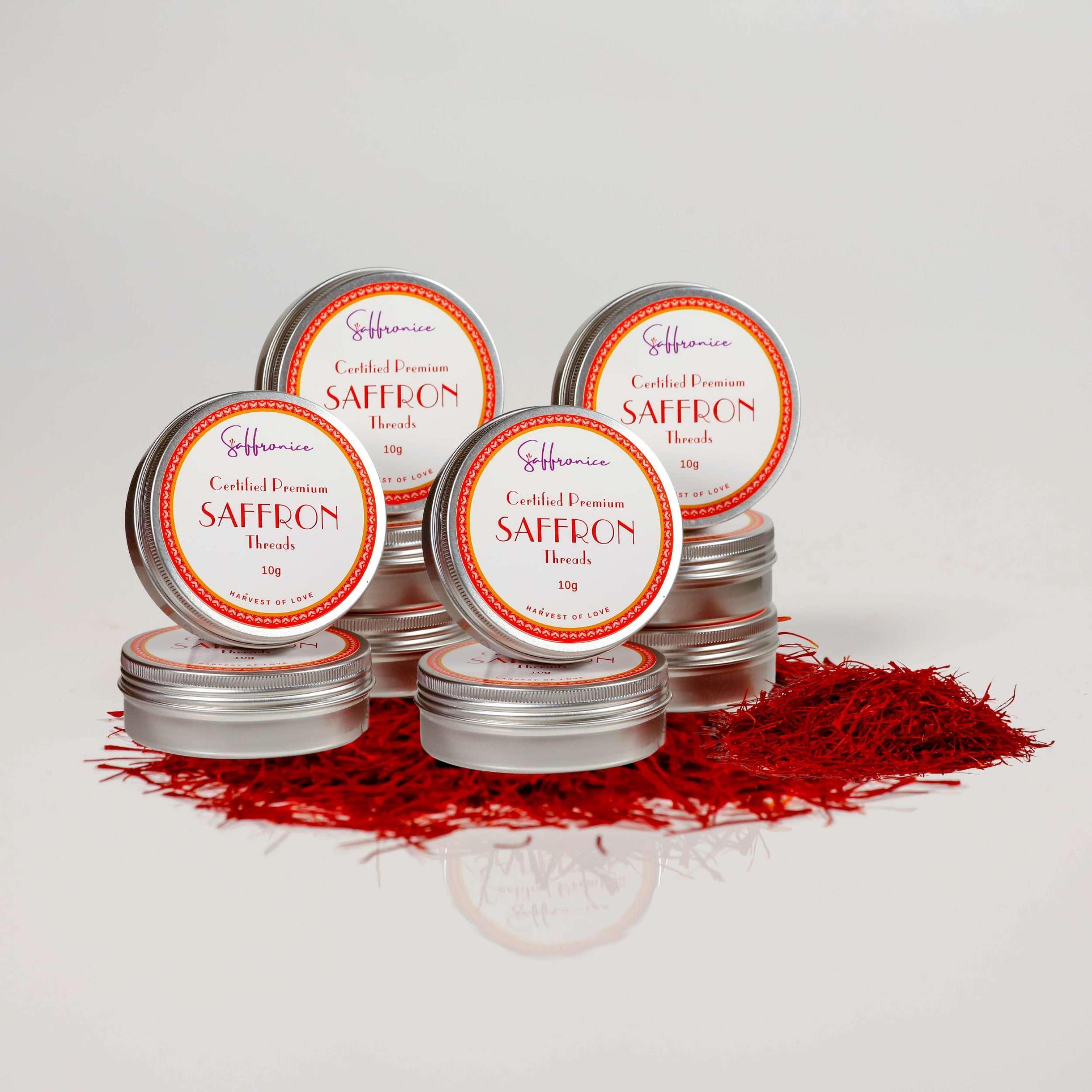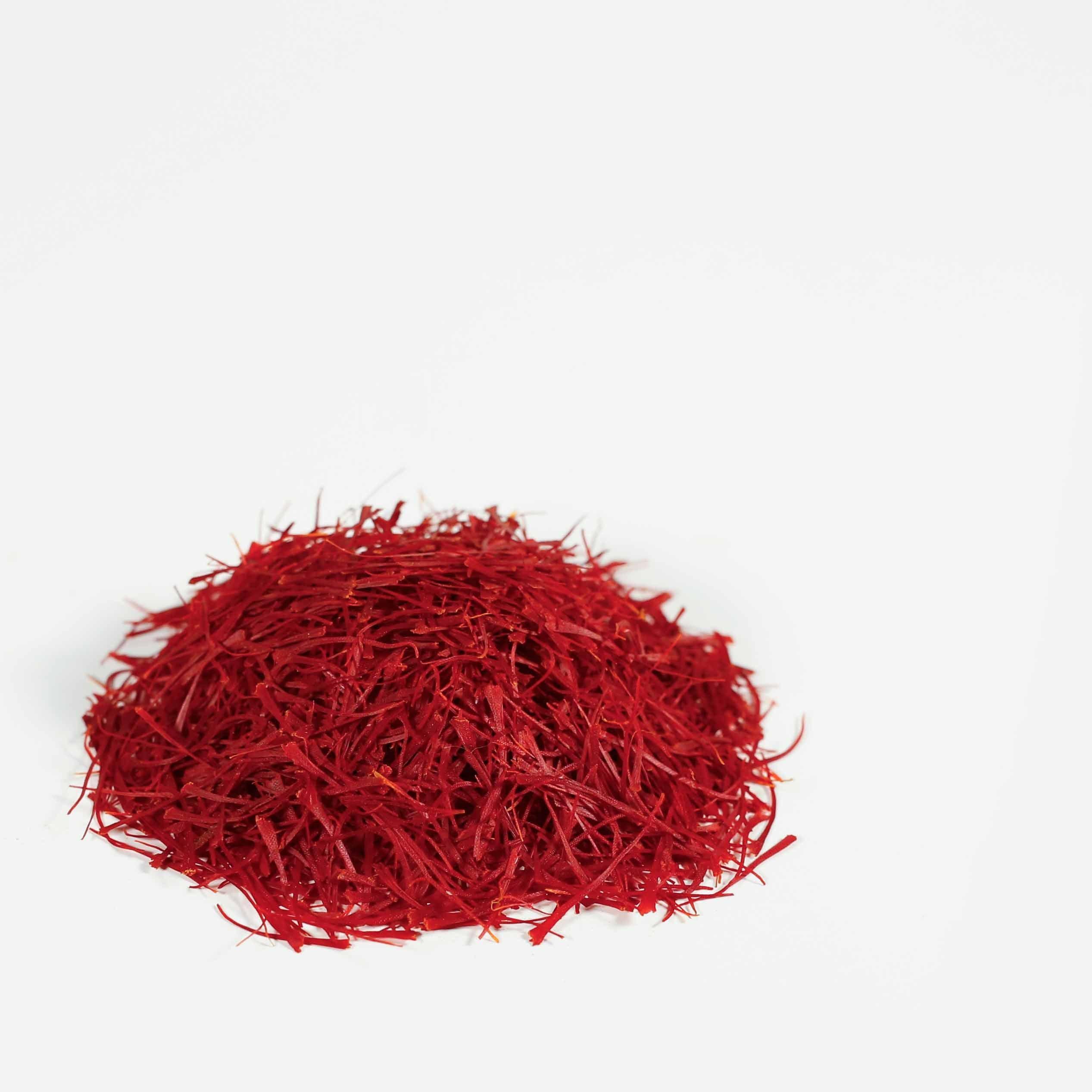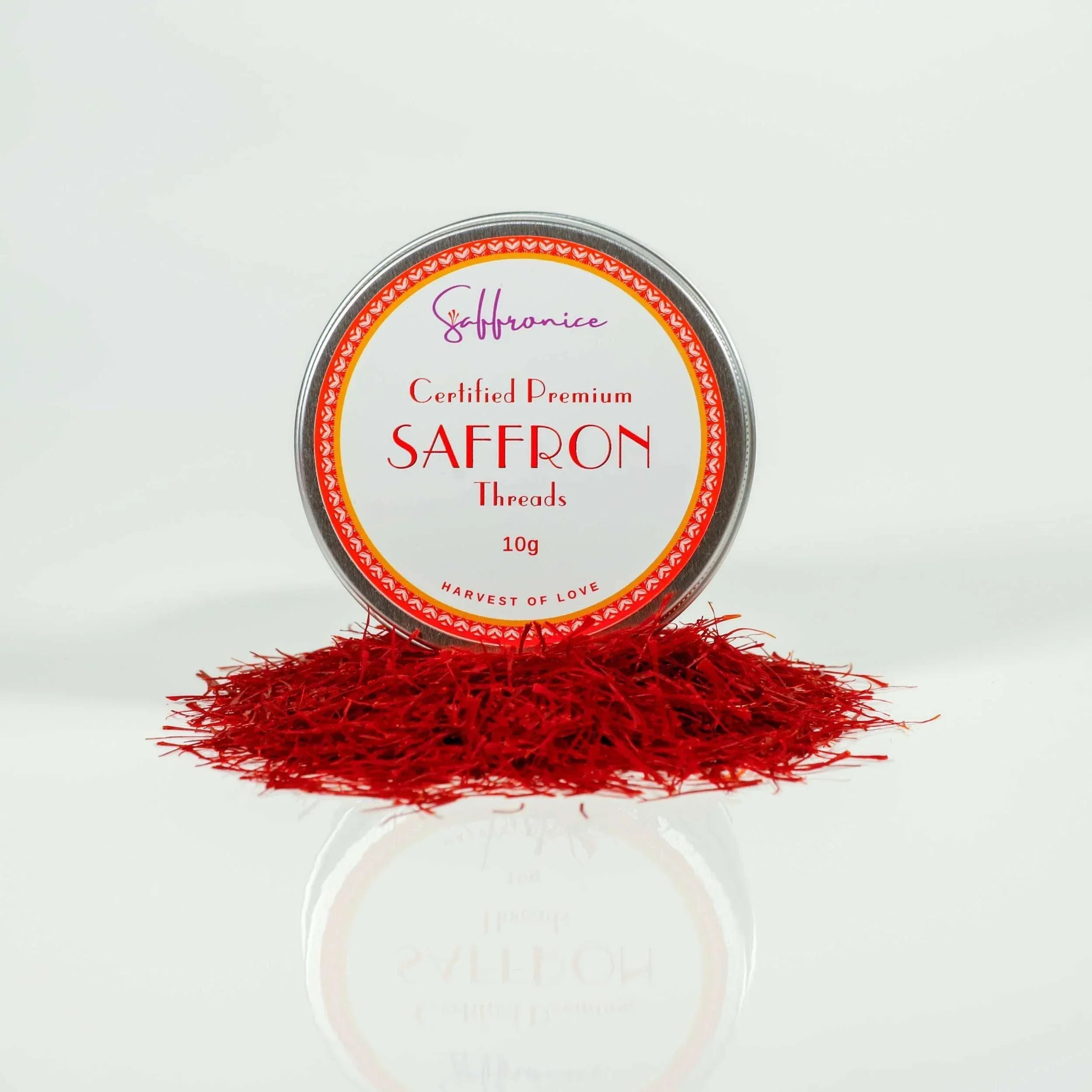What is Saffron? Exploring the World's Most Valuable Spice
Saffron, often referred to as the 'red gold' spice, comes from the stigmas of the Crocus Sativus flower. It is known for its bright colour, distinct smell, and one-of-a-kind taste. For over three thousand years, saffron has fascinated both food lovers and health practitioners.
Historical Significance
- Cultural Importance: Saffron has been a symbol of luxury and tradition in various cultures for more than 3,000 years. Ancient civilisations valued it not only for cooking but also for its healing properties and use in dyeing fabrics.
- Origin: The story of saffron begins with the delicate purple flowers of Crocus Sativus. Each flower produces only a few precious stigmas, which are carefully handpicked to create this prized spice. This labor-intensive harvesting process plays a significant role in its high price.

Why It's Considered the Most Treasured Spice
- Labour-Intensive Harvesting: The meticulous process of gathering saffron involves carefully picking the stigmas before the flowers bloom. This labour-intensive method greatly contributes to its high cost.
- Global Rarity and Value: Because saffron has only one harvest season and requires delicate handling, it remains rare worldwide. Current market prices reflect its status as a costly commodity, ranging from $4 to $12 per gram depending on quality and origin.
Saffron's unmatched aroma, vibrant colour, and rich flavour make it an essential ingredient in cuisines around the world, earning it the title of the most valuable spice globally.
The Intricate Cultivation and Harvesting Process
Major Global Cultivation Regions
Saffron is primarily cultivated in regions with specific climatic conditions. Iran dominates the market, supplying over 90% of the global saffron. Other significant producers include Spain, Greece (Krokos Kozanis), India (Kashmir), and Afghanistan. Each region has unique characteristics that influence the saffron's flavour, aroma, and colour.
Handpicking Stigmas Before the Flower Opens
The harvesting process is labour-intensive and requires meticulous care. Stigmas are handpicked from the Crocus Sativus flowers before they fully open. This ensures the highest quality threads. Workers often start picking at dawn to prevent the delicate stigmas from wilting or losing potency.
Challenges Due to Climate and Labour Demands
Cultivating saffron poses several challenges:
- Climate: Saffron plants require a precise balance of sunlight, water, and soil nutrients.
- Labour: The handpicking process demands significant manual labour, making it both time-consuming and costly.
These factors contribute to its high price tag.
Modern vs Traditional Harvesting Methods
Traditional harvesting methods involve drying stigmas in the sun or using specialised ovens to intensify their aroma and flavour. Modern techniques may incorporate advanced machinery to streamline parts of the process while maintaining quality standards.
By understanding these cultivation and harvesting processes, you gain insight into why saffron is considered a precious spice globally.

Understanding Saffron Quality and Grading
ISO 3632 Saffron Grading System
The ISO 3632 standard is pivotal in determining saffron quality, focusing on moisture content and chemical markers such as crocin, safranal, and picrocrocin. These compounds are crucial for saffron’s colour, aroma, and flavour profile.
Differences in Varieties
Different regions produce distinct varieties of saffron:
- Iranian Saffron: Considered the gold standard. It includes grades like Negin (highest quality, deep crimson threads), Sargol (top part of the stigma), Pushal (stigmas with some yellow style), and Dasteh (full stigmas with styles).
- Spanish Saffron: Classified into Coupe, Mancha, Rio, and Sierra classes. Known for its sweet floral aroma.
- Indian Kashmiri Saffron: Renowned for its deep colour but milder flavour profile.
- Greek Krokos: Organic cultivation with a bright colour and intense aroma.
Key Factors Influencing Quality
Saffron's unique attributes are influenced by various factors:
- Aroma: Typically sweet, floral, and earthy.
- Colour: Deep crimson hue signifies high-quality saffron.
- Flavour Profile: Sweet with slightly bitter undertones.
Understanding these differences allows you to make informed choices when selecting saffron for culinary or medicinal purposes.
Why Is Saffron So Expensive?
Saffron's high price is mainly because of the labour-intensive way it is harvested. To make just one kilogram of dried saffron stigmas, around 150,000 flowers are required. Each flower produces only a few threads, and these must be picked by hand before the flower opens, making the process more complicated and demanding.
Another reason saffron is expensive is that it is scarce. The Crocus Sativus plant only blooms once a year during a single harvest season. This limited supply, combined with the careful handling needed to maintain the quality of the threads, increases costs.
In 2024, saffron prices range from $4 to $12 per gram, depending on its quality and origin. These prices reflect its status as a luxury item, often compared to gold because of its value and rarity.
Comparison with other luxury items:
- Gold: Known for its high market value and investment potential.
- Truffles: Another rare and expensive ingredient prized in gourmet cuisine.
- Caviar: Celebrated for its exclusivity and refined taste.
The term "red gold" aptly describes saffron's worth in culinary circles, emphasising its unmatched quality and importance.

Culinary Uses and Global Recipes Featuring Saffron
Saffron's role as a culinary gem is unparalleled, adding rich color and depth to dishes worldwide. The spice transforms ordinary recipes into extraordinary experiences with its vibrant hue and complex flavors.
Iconic Recipes Featuring Saffron
- Spanish Paella: This traditional dish combines seafood, meats, and vegetables with saffron-infused rice, creating a flavorful and colorful masterpiece. You can explore an exotic version of this dish with our Seafood Saffron Paella recipe.
- Italian Risotto alla Milanese: A luxurious risotto where saffron imparts a golden color and distinctive taste to creamy Arborio rice.
- Persian Stews: Delicate threads of saffron elevate Persian stews like Ghormeh Sabzi, offering a unique blend of flavors.
- Indian Biryanis: Saffron adds an aromatic richness to the layered rice dish, making it a staple in celebratory feasts.
- Desserts:
- Persian Halva: A sweet treat where saffron contributes to its rich flavor profile.
- Spanish Leche Frita: Fried milk dessert enhanced by saffron’s subtle sweetness.
Enhancing Aroma and Flavor
Drying methods for saffron intensify its unique aroma and flavor contribution. The process turns fresh stigmas into potent threads that release their essence when added to dishes. This transformation is key to understanding why saffron remains a treasured ingredient in cuisines across the globe.
Understanding the versatility of saffron helps appreciate its widespread culinary uses, from savory dishes like these diverse Saffron Recipes to delectable desserts.

Health Benefits and Traditional Medicinal Uses
Saffron is known for its numerous health benefits, thanks to its high content of antioxidant compounds such as crocin, crocetin, safranal, and picrocrocin. These natural substances help neutralize harmful free radicals in the body and reduce oxidative stress, which can lead to aging and chronic diseases. Research suggests that saffron may also promote heart health by improving cholesterol levels and reducing inflammation in the arteries.
Mood Enhancement Potential
Studies have shown that saffron may have positive effects on mood. Taking saffron daily has shown promise in reducing symptoms of depression and anxiety, sometimes even matching the effectiveness of certain medications without significant side effects. The ideal dosage appears to be around 30 mg per day, whether in capsule or tea form.
Traditional Uses in Medicine
Various traditional medicine systems have recognized saffron for its anti-inflammatory properties:
- Ayurvedic medicine uses saffron to balance the body's energies (doshas), improve skin appearance, and support digestion.
- Chinese medicine includes saffron (藏红花) in herbal mixtures aimed at promoting blood circulation and relieving pain.
- Persian tonic traditions rely on saffron-infused drinks for boosting energy and recovering from fatigue.
Modern Applications
In recent times, saffron has gained popularity in wellness practices. It can now be found in dietary supplements, beauty products, and herbal teas—combining ancient knowledge with modern scientific research. This spice continues to represent holistic health, connecting traditional healing methods with current evidence-based approaches.
For more information about the health benefits and potential risks associated with saffron, you can explore various articles available online.

Global Production Landscape & Emerging Producers
Iran dominates the saffron production landscape, supplying over 97% of the global market with unmatched quality metrics. This country's saffron is often regarded as the gold standard due to its high crocin, safranal, and picrocrocin levels, contributing to its robust aroma and deep red color.
Spain, despite experiencing declining production influenced by climate change, maintains a rich cultural heritage surrounding saffron. Spanish regions celebrate harvest festivals that pay homage to this treasured spice.
Indian Kashmir produces saffron known for its distinct deep color but milder flavor profile compared to Iranian varieties. It remains a significant player in the global market.
Greece offers organic Krokos saffron, which thrives under natural farming methods. The Greek Krokos Kozanis variety holds PDO status (Protected Designation of Origin), ensuring high-quality standards and sustainable practices.
Emerging producers such as the US, Australia, and South Africa face climatic challenges impacting ISO compliance. These countries are exploring innovative cultivation techniques like hydroponics and vertical farming to overcome environmental hurdles and meet quality benchmarks.
The diversification of saffron production highlights both traditional powerhouses and new entrants striving for excellence amid changing climates and global demand shifts.
Proper Storage Tips to Preserve Quality
Protecting saffron's delicate stigmas from sunlight and heat is essential to maintain its potency. Proper storage practices can significantly extend the shelf life and preserve the unique flavor of this treasured spice.
Recommended Storage Methods:
- Airtight Containers: Use airtight glass or metal containers to store saffron in small quantities. These materials prevent exposure to air and moisture, which can degrade the spice.
- Avoid Plastic: Plastic containers are not recommended as they may impart odors or allow moisture penetration.
- Refrigeration: Storing saffron in the refrigerator, tightly sealed, helps preserve its freshness. Avoid freezing, as this can damage the stigmas.
- Protect from Light and Heat: Store saffron in a cool, dark place away from direct sunlight and heat sources. Lightproof containers or UV-protected packaging are ideal.
Key Points for Longevity:
- Small Quantities: Keeping saffron in small quantities ensures that you use it before it loses its potency.
- Seal Tightly: Ensure containers are sealed tightly to prevent exposure to air and humidity.
- Monitor Temperature: Maintain a stable temperature, ideally between 4°C to 10°C (39°F to 50°F), without fluctuations.
Implementing these storage tips will help you preserve the flavor and aroma of saffron, ensuring that every thread retains its rich quality for culinary and medicinal uses.
The Value of Saffron in 2025: Understanding Its Price Tag
Saffron, often hailed as the most expensive spice in the world, carries a price tag that reflects its rarity and the intricate process involved in its cultivation and harvesting. In 2024, the cost of Saffron will vary significantly based on its quality and origin, with prices ranging from $4 to $12 per gram. This section delves into the factors contributing to Saffron's high cost, offering a deeper understanding of its value.
1. Why is Saffron Expensive? A Look at the Labour-Intensive Harvesting Process
The heart of Saffron's high cost lies in its labour-intensive harvesting process. Each Crocus Sativus flower, the source of Saffron, yields only three delicate stigmas. These stigmas must be carefully handpicked, usually at dawn, to preserve their quality. It takes about 150,000 flowers to produce a kilogram of Saffron. This immense labour and the need for precision and speed significantly contribute to the spice's exclusivity and high price. For larger quantities of 1kg or more, prices can range from $2,500 to AUD 5,000 per kilo.
2. The Cost of Saffron: Reflecting Quality and Effort
The cost of Saffron directly reflects the effort and resources invested in its production. Every step requires meticulous care, from planting to harvesting, drying, and packaging. The process is not mechanisable, relying instead on skilled labourers. Additionally, the quality of Saffron, determined by its colour strength, aroma, and flavour intensity, plays a crucial role in setting its price. Higher-grade Saffron, with deeper hues and more robust flavour profiles, commands a higher price within the range mentioned earlier.
3. Saffron Harvesting Process: A Tradition of Excellence
The harvesting process of Saffron is more than just a farming practice; it's a tradition passed down through generations. In major saffron-producing regions, the harvesting season is a time of community gathering and celebration. The precision with which each stigma is extracted and dried is a testament to the expertise and dedication of the saffron farmers. This traditional approach, while time-consuming and labour-intensive, ensures the highest quality of the final product.
Valuing the Red Gold

Understanding the value of Saffron goes beyond acknowledging its price tag. It involves appreciating the intricate journey from flower to spice, the labour of love by the farmers, and the rich cultural heritage embedded in its production. When we understand why Saffron is expensive, we gain a new appreciation for this extraordinary spice, recognising it as a luxury worth its weight in gold.
Storing Saffron: Tips to Maintain Its Essence
Saffron, known for its exquisite flavour and aroma, demands careful storage to maintain its essence. As a precious and delicate spice, the way it is stored can significantly impact its quality and longevity. This section provides valuable insights into the best ways to store Saffron, ensuring its unique characteristics are preserved.
1. The Art of Preserving Saffron's Flavour
The key to preserving Saffron's distinctive flavour lies in protecting it from elements that can degrade its quality. Saffron should be stored away from direct sunlight, as UV rays can diminish its vibrant colour and weaken its aromatic compounds. A cool, dark place, such as a pantry or a cupboard away from heat sources, is ideal for keeping Saffron at its best.
2. Best Ways to Store Saffron: Containers and Conditions
Choosing the correct container is crucial for saffron storage. Airtight glass or metal containers are preferred over plastic, as they don't transfer any odours and protect the spice from moisture and air, which can lead to spoilage. It's also advisable to store Saffron in small quantities, as frequent exposure to air every time the container is opened can reduce its potency over time.
3. Saffron Storage Tips: Longevity and Potency
To extend the shelf life of Saffron and maintain its potency, consider storing it in the refrigerator. This cooler environment helps to slow down the degradation process. However, ensure that the Saffron is tightly sealed to prevent it from absorbing moisture or odours from other foods. Avoid freezing Saffron, as extreme temperatures can alter its delicate structure and flavour profile.
Correctly cherishing the Golden Threads

Storing Saffron is as essential as selecting a high-quality spice. By following these storage tips, you can ensure that each strand of Saffron retains its magical aroma and flavour, ready to enhance your culinary creations. Remember, a little care goes a long way in preserving the essence of this luxurious spice.
Saffron's Timeless Appeal
As we close our exploration of Saffron, it's evident that this exquisite spice is not just a culinary ingredient but a symbol of heritage, luxury, and global unity. Saffron's journey through history, its myriad uses in kitchens and medicine cabinets, and its cherished status across continents speak to its timeless appeal.
1. Saffron's Importance in History: A Rich Legacy
Saffron's story is interwoven with human history, having been a valued commodity in ancient civilisations. From the frescoes of Minoan palaces to the lavish courts of Persian kings, Saffron has always been a mark of wealth and sophistication. Its importance in historical trade routes underscores its value and the lengths people would go to procure this 'red gold'.
2. Why Choose Saffron: Beyond the Flavour
The decision to choose Saffron goes beyond its unique taste and aroma. It's also about embracing a piece of history, indulging in a luxury cherished for millennia, and experiencing a spice that connects us to different cultures and traditions. Saffron is a choice for those who appreciate life's finer things and understand the value of quality, tradition, and craftsmanship.
3. Saffron's Global Appeal: Uniting Cultures
Saffron's global appeal lies in its ability to transcend geographical and cultural boundaries. It's a common thread in the culinary tapestries of various countries, each adapting it to their unique palates and traditions. This universal appreciation of Saffron reflects our shared human experience – a love for flavours that bring us joy and connect us to our history and each other.
Celebrating the Splendour of Saffron
As we reflect on Saffron's journey from the fields of ancient Persia to the modern-day kitchen, its appeal still needs to be improved. Saffron continues to captivate us with its rich history, unparalleled flavour, and ability to bring luxury to our daily lives. This is the essence of Saffron's timeless appeal – a legacy that continues to flourish in our collective consciousness.
View Other Interesting Saffron Related Articles


